Madrid Metro Fares 2024
Here is a list of Madrid subway ticket prices for 2024 .
Purchasing a ticket for transportation in Madrid can be very complicated because the price depends on the line you use, the number of stations that want to travel and the company that owns the corresponding line.
To summarize: for zones A and ML1 (the central part of Madrid), the price is:
To understand the prices, onr must understand that the Madrid metro really is "several metros" that have been connected together, and when one gets exits one and enters the other, you have to re-pay the trip according to the money you have.
- Zone A: €21.80
- Zone B1: €25.40
- Zone B2: €28.80
- Zone B3,C1,C2: €32.80
- Zone E1: €44.20
- Zone E2: €52.70
- Youth Pass: €8 (all zones)
- Senior Pass: free
- Child Pass: free
- Single ticket: €1.50 (up to 5 stations), €2
- MetroEste, MetroNorte, MetroSur: €1.50
- TFM ticket: €2
- Combined Metro: €3
- Metrobús (10 trips): €6.10
- Zone A and ML1: €1.5 - €2
- ML2 and ML3: €2
- Parla Tram: €1.30
- 10-trip ticket: €6.10
- Bus ticket: €1.50
- Airport express ticket: €5
- 10-trip ticket: €9.10
- Commuter Rail and Mid-Distance : Free for regular users in 2024.

Map of Madrid metro zones
For better understanding, we performed the following map:
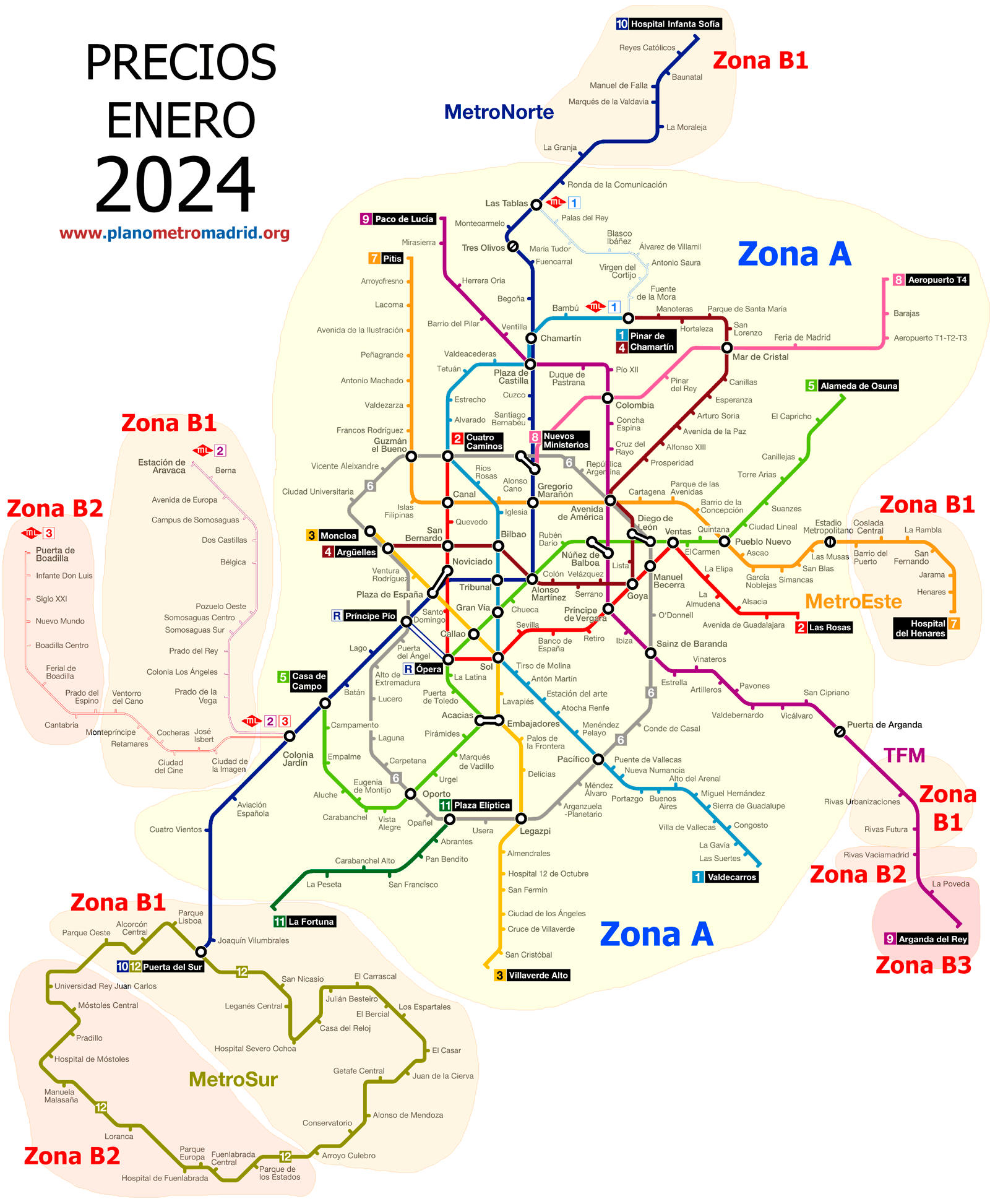
Where to buy tourist tickets online?
On the website of Tiqets, you can buy cheaper tickets for all kinds of museums, shows, monuments, attractions, and more places in Madrid. In some things (few) you can save up to 20%. In most places, with these tickets you will not queue at the entrance (skip the line).
Questions and answers
Where can metro tickets be purchased? They can be bought in various locations:
- The most obvious place is in the machines in the metro stations that allow payment by coins, banknotes and even credit cards. All machines have touchscreen and are easy to use.
- The next place would be the following station platforms : Puerta de Arganda, Tres Olivos and Estadio Metropolitano.
- Finally, in the passage barrier of the Metro station "Puerta del Sur".
Why is pricing of Madrid Metro tickets so complicated?
We don't know. But legend has it that years ago, a senior Metro Madrid official conjured up the devil and asked him to invent tariffs to drive people crazy, hence the current prices of the Madrid metro came into being. To complicate matters further, one price was made for the 3 zones (B1 B2 and B3) + the TFM metro pack and another for the B1 and B2 zone + MetroSur pack. To top it off, in the world of urban transport the a tram is a "tram”. In Madrid however, it was deemed a "metro ligero" ("light rail"). Since then millions of people roam the streets of Madrid in a zombie like state, cursed forever to wandering, and eating brains.
We hope that with our maps and the above data, you can travel around Madrid, happily understanding at all times how much the fare is, without becoming a zombie.
Do children have to pay fare?
- All children from 0 to 3 years, the travel is free. The rest pay like an adult.
Contact 1: For complaints or questions about the Madrid Metro (schedules, tickets, routes), please use the official Metro Madrid contact .
Thank you very much for your visit, we hope our work has been helpful to you.

Madrid’s public transport system is without a doubt, fantastic. It is fast, safe, clean and very reliable. In comparison with other European cities, Madrid’s public transport is also considered cheap and very efficient, which makes getting around Madrid very easy. Madrid’s public transport consists of the Madrid Metro (underground), day & night buses, the ‘Metro Ligero’ (Madrid light rail) as well as the regional train system known as the ’Cercanías’ which are the suburban trains that connect the city of Madrid with rest of the Madrid region. So, no matter where you are going, Madrid’s public transport system will get you there.
Are you moving to Madrid for a longer period and would like to get a monthly pass? Get ahead and order your personal public transport card in advance.
There are also great alternatives to Madrid’s public transport when it comes to getting around Madrid. Alternatives like, ridesharing apps and car sharing options as well as e-Scooters, e-Bikes & Motor scooter rental services . Since June 2014, Madrid has also been offering public, electric bikes that you can rent at your convenience all over the city.
To keep reading all about Madrid’s transport options, check out the content overview and feel free to click on the topics you are most interested in. Each chapter contains relevant information regarding getting around Madrid. From details on how to get from and to the airport, ticket options, prices, schedules & transport zones to details on the various means of transportation available and how use them.
Furthermore, in our FAQ section at the bottom of this ’Getting Around Madrid’ guide, we will clarify some of the most common questions and doubts regarding Madrid’s public transport.
Important: The Citylife team has collected & compiled the information on this page via intense research and investigation. It does not replace your own research!
1.3 Madrid Tourist Travel Pass
2.2 have your transport card delivered to the citylife office for free, 3.5 autobuses interurbanos – the suburban buses of madrid, 4.3 comparison tools, 5.2 car rentals, carsharing & ridesharing in madrid with discounts, 1. getting around madrid by public transport – ticket options & prices.
As previously mentioned, Madrid’s public transport system is very accessible and efficient. You can get all over the city centre by using just the Madrid metro and bus . The Madrid metro and bus systems are integrated, meaning that you can access the Madrid metro lines and the EMT bus lines with the same ’ticket’. Other available transportation means like the Cercanías and Renfre trains and the suburban buses which take you outside the city will have different ticket types and different tariffs. The beginning of this article will focus more on the main transport within the city center (metro & city bus), however if you wish to read more on Madrid’s Light Rail system, suburban buses and long distance options, you can skip ahead .
To start with, there are various ticket options available for the Madrid public transport system. Some of which are better for those staying in the city for mid to long-term periods while others are perfect for those visiting for a short-term period. In the section below we will explain each ticket option in detail.
1.1 Monthly Pass for Mid to Long-Term Stays
If you are coming to Madrid for a longer period – to study or work, for example – it is very likely that you will move around by public transport on a regular basis. In this case we highly recommend getting your personal public transport card . This card will give you access to the the monthly transport pass , known as the ’ Abono ’. Using a monthly pass is by far the cheapest and most convenient way as it gives you full access to all of Madrid’s public transport for 30 day periods.
When it comes to getting your public transport card , we highly recommend ordering it online in advance . Ideally about 15 days before you plan to arrive to Madrid . By doing this you will avoid long wait times to book an appointment as well as simply skipping the need to attend an appointment in the first place. By ordering online, your card will be delivered to you. For more details on how to order you public transportation card online either continue reading, or click here to skip ahead.
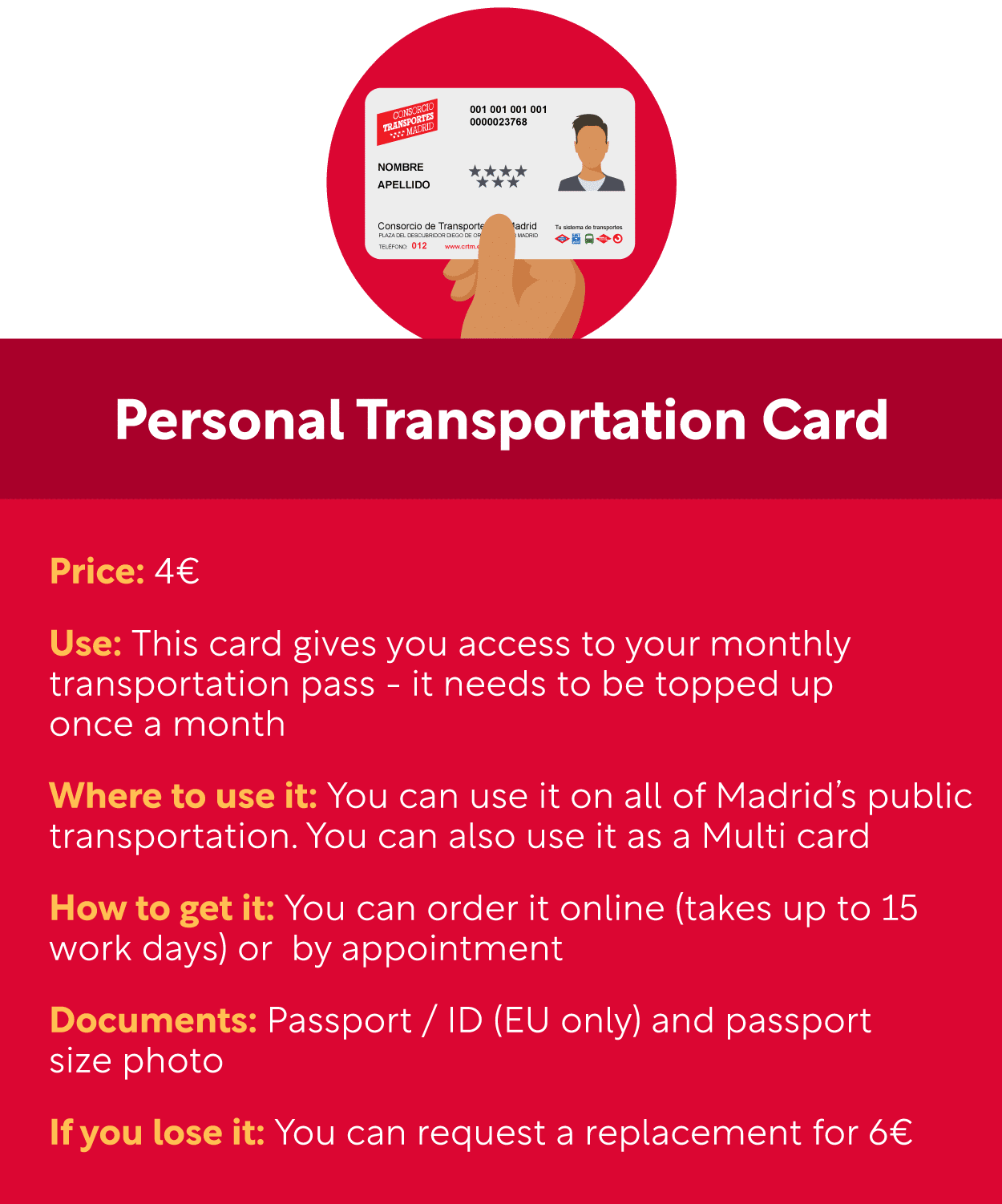
Download the Madrid Metro Map and check out various other maps for Madrid bus routes, light rail train lines and regional train lines in our chapter called Madrid Transport Options – A Comprehensive Outline, or skip ahead .
Monthly Pass – Prices & Where to Buy
As we mentioned above, to get the monthly pass you must first get your personal transport card . This card costs 4€ and once you have it in your possession, you can then top it up with the monthly pass (’ Abono ’). The price of your monthly pass depends primarily on your age and the transport zones of Madrid you would like to have included – there are no special prices for students. Finally, every 30 days you will need to top up your personal public transport card with your new monthly pass to be able to continue to use Madrid’s public transport system. You can do so conveniently at one of the many metro stations at the machines either with cash or credit card.
Abono Joven (Monthly Youth Pass)
If you are under 26 years of age , you will be able to use the youth pass, known as ’Abono Joven’. With this pass you will only need to pay 20€ a month and you will be able to use all of Madrid’s transport options between all transport zones ! You can move freely by metro and bus all over the city, to its outskirts as well as to the airport without paying a supplement.
Abono Normal (Monthly Standard Pass)
If you are aged 26 or older you will have access to the standard monthly pass, known as ’Abono’. This pass requires users to pay per transport zone. The base price which covers zone A, currently costs 54,60€. If you need to include more zones, the price will rise. Click here for more information of each of Madrid’s zones.
The Madrid Transportaton Office has officially reduced prices of all transport ticket types until the end of 2023! For a detailed look on prices please refer to the official page here .
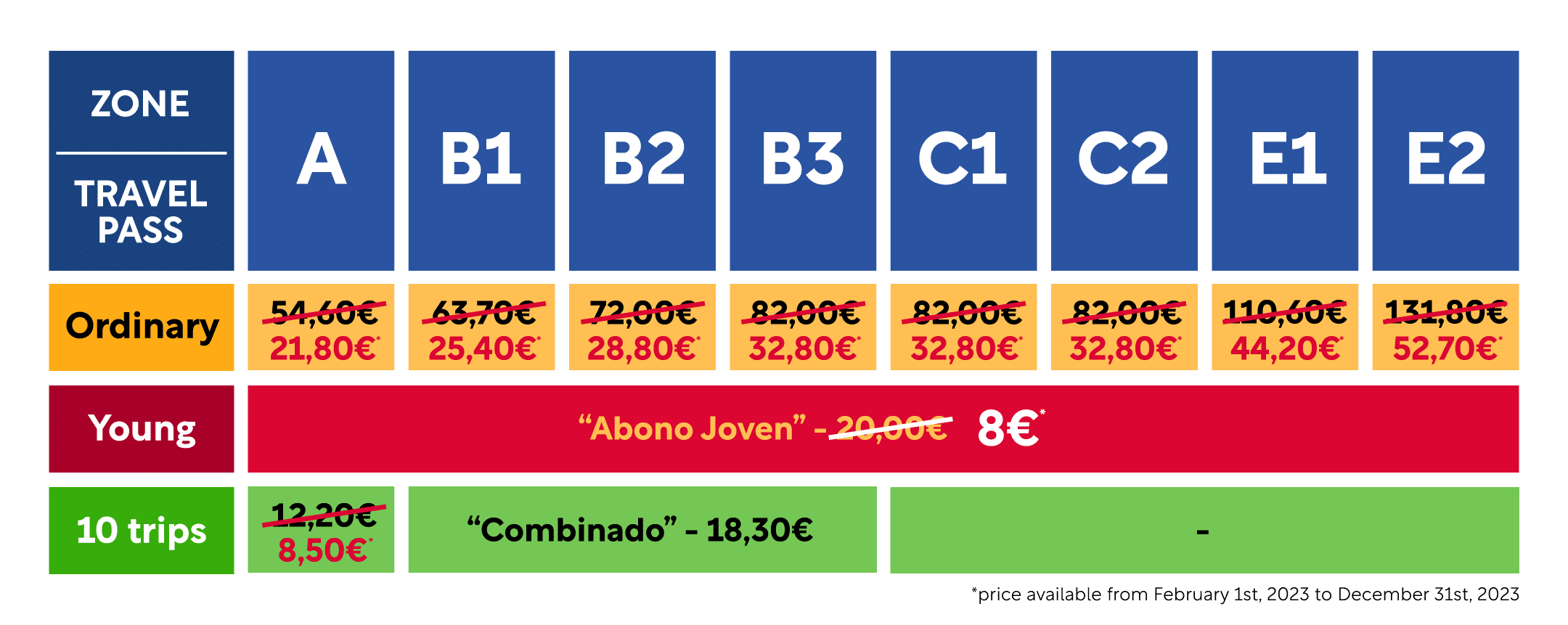
If the monthly pass is what you need, you can skip ahead in this article for instructions on how to order your public transport card online.
Above you see a price chart per-zone, however there are also inter-zone packages which combine certain zones together under one price. This is a great option for those who don’t often visit the more central zones and therefore do not want to pay for access to them. For more details on all pricing options, click here .
1.2 Single & 10 Trips Tickets
If you happen to be visiting Madrid for only a few days or weeks, or if you don’t need to use the public transport system on a daily basis, you can use Madrid’s more short-term option known as the Multi Card . As with the personal public transport card, you will first need to purchase the card itself (only 2.5€ ), then you top up the short-term pass of your choice onto the card. The Multi Card offers two options: Single tickets and 10 trip tickets.
Single & 10 trips tickets – Prices & Where to Buy
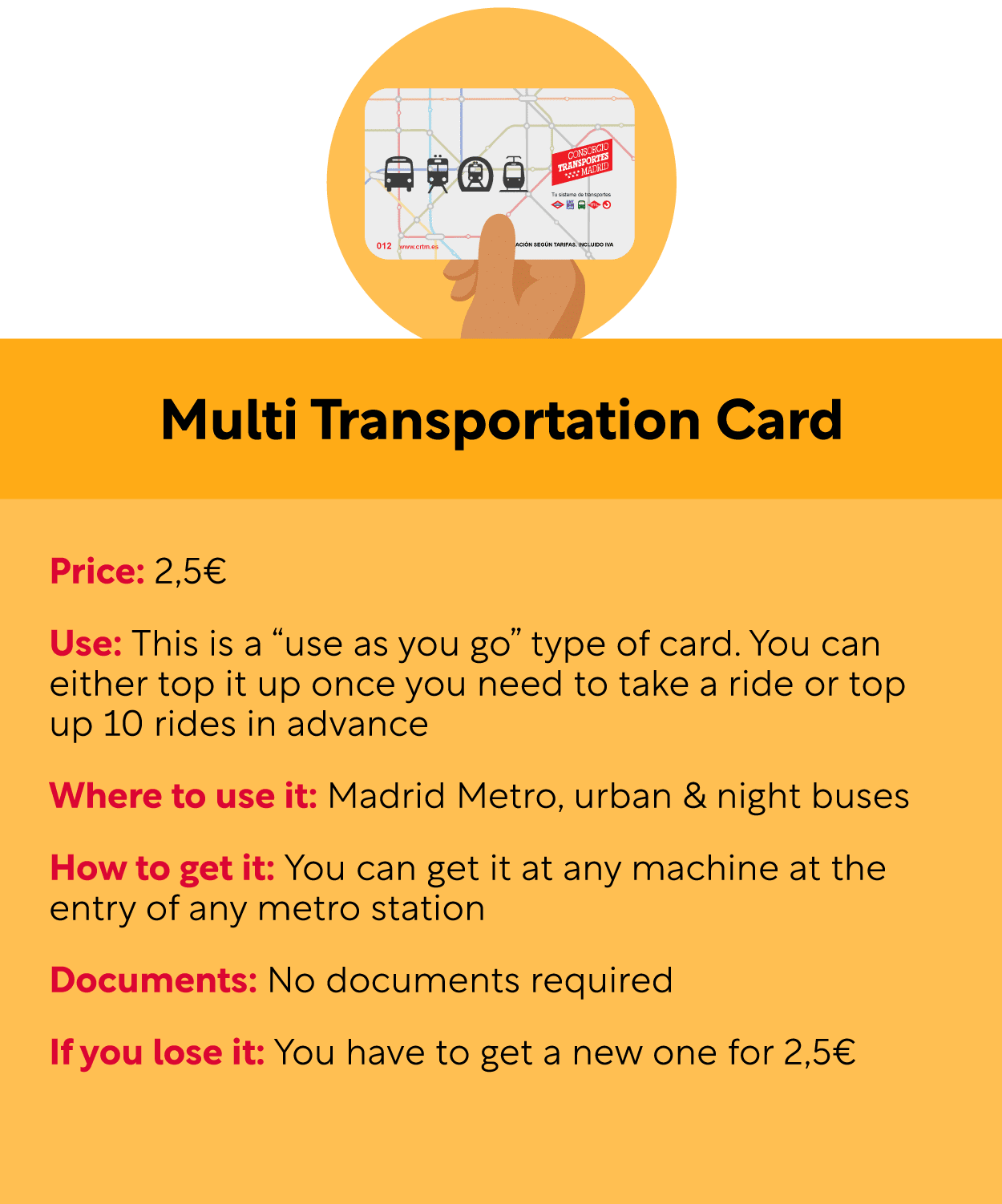
A single journey on public transport in Madrid will usually cost between 1,50€ and 2€ , making it very budget friendly. If you don’t want to top up your card every time you need it, you should consider buying a 10 trip ticket which costs just 12,20€ . Both tickets work on metro and bus systems within zone A. As the Multi Card is not personalized, it can be shared with others .
Buying the Multi Card and it’s corresponding tickets is incredibly easy. All you need to do is go to any metro station in Madrid and place your order at any of the ticket machines there. These machines look like ATMs but will have the branding of the Madrid metro on them. Once there you can pay either in cash or with credit card.
Please be aware that you may change freely between various metro lines once you are inside the metro system. But changing from metro to bus or from one bus to another means that you have to use your card again. That being said, you can also top up your Multi Card from the bus driver – but only in cash.
To read more about the Multi Card, please click here .
The Madrid tourist travel pass gives you unlimited usage of zone A and T between 1-7 days. This is a very practical and very affordable way to get around Madrid on a short-term basis. This is especially true because the majority of Madrid’s most popular locations for visitors and tourists are located within zone A. Additionally, zone T is perfect for those planning to make day trips to some of the small cities located outside of Madrid.
Madrid Tourist Travel Pass – Prices & Where to Buy
Prices are determined by number of days and by desired zones . Check out the table below for a price breakdown of each. To buy the Madrid tourist pass you simply visit any metro station and use the ticket machines located there. Alternatively, you can buy these passes at the sales points at the Madrid airport. The Madrid tourist pass comes with the Multi Card included. Once the pass expires, you can top up the Multi Card with single or ten trips tickets and keep using it. Finally, please keep in mind that Madrid tourist pass cannot be shared between several people. Therefore, each person in your group must hold their own card. For more details on the Madrid tourist pass, please click here .

2. How to Get your Personal Public Transport Card
As we mentioned at the top of this article, we recommend that your order your personal public transport card online – ideally about 3 weeks before your arrival . It will save you time , money and hassle . To make the process of ordering your public transport card online as simple as possible, we’ve created a step by step guide . Continue reading below for all the details.
If you are already in Madrid or did not order your transport card on time online, you can use our FREE SERVICE to make an appointment for a time that suits you best ! Citylife has access to exclusive appointment dates and times so you can get a next-day or even a same-day appointment that you won’t find online! To do so, simply fill out our form below and we will be in touch.
2.1 Step by step Guide – How to Order your Public Transport Card Online
Order your public transport card online by filling out the official request form. Once your request has been processed by the Consorcio de Transportes de Madrid, your card will be sent to the indicated shipment address usually within 10-15 working days. Here is a step by step description:
- Access the CRTM webpage here !
- Select the option “Individual”, close the pop-up screen by clicking on “Cerrar” proceed to the next screen
- On the next screen you have to provide some personal information. You need to choose between “pasaporte” (if you have a passport) or “DNI no español” (if you have a valid national ID card.) At “Código ISO” you need to fill in the country code of your passport and at “Documento” you need to fill in the document number.
- Next up you need to fill in your “nombre” (first name), apellido (last names) and your date of birth. And press “iniciar solicitud on-line” to continue.
- On the next page you will have the chance to review your details. You will also need to add your email address (correo eletronico), Spanish phone number and the address in Spain where you would like the card to be sent ( please feel free to use our phone number and address ). Once done, click “Siguente.”
- You will be asked to upload a standard passport sized photo in colour, as well as a scanned copy of your passport or ID card.
- Once uploaded, you need to accept the terms and conditions at the bottom and continue by clicking on “Siguiente”.
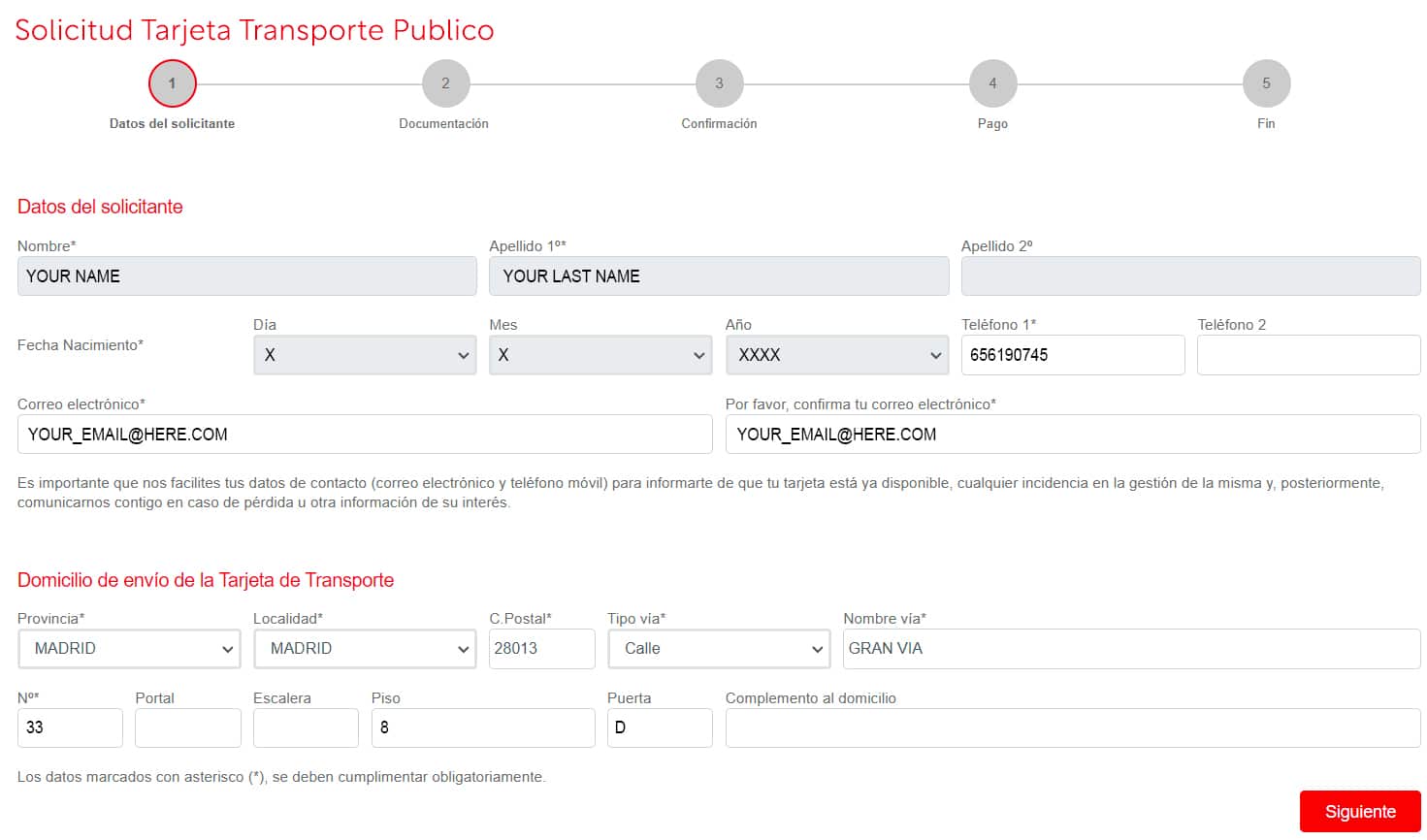
- Last but not least, you will be asked to review and confirm the information you have provided. You will also have to pay the mandatory standard fee of 4€ to the Consorcio de Transportes de Madrid for issuing your public transport card. If the process is completed successfully you will receive a confirmation email.
The Consorcio de Transporte de Madrid only delivers personal public transport cards to Spanish addresses . Additionally, you can only input a Spanish phone number on the application form. To keep things stress free, you can indicate the Citylife mobile phone number and use our office address as the shipment location . We will happily store the card for you free of charge until you are able to pick it up.
While at our office you you can also take advantage to ask all your questions, activate a free Spanish prepaid SIM card , open a free Spanish bank account , get free advice on housing or simply some hints & tips to explore this beautiful city.
To ensure that you correctly complete the online form when ordering your transport card, make sure to read the text above and have a look at the example image we included. We’ve also included the Citylife details that you will need to fill out the form and to ship it to our office for free storage, below:
IMPORTANT: Once you’ve ordered your card online and indicated our address as shipment address, please send us a short confirmation via WhatsApp to our official mobile phone . This way we are aware of it too and can notify you once it has arrived! Please don’t forget! Once you have picked up your public transport card upon your arrival, you can top it up with your monthly pass at any machine located in one of the many Madrid metro stations around the city.
If you couldn’t request the public transport card ahead of time or the online order didn’t work, send us a WhatsApp with your full name and arrival date . We will make an appointment for the day and time that is convenient for you at no cost!
3. Madrid Transport Options – a Comprehensive Outline
The following sections of this article will outline everything you need to know about getting around in Madrid by public transport. From all Madrid’s modes of transport and how to use them to convenient alternatives. In addition to a detailed and comprehensive explanation we will also include promo codes for Uber and Cabify at the bottom of this article, which will help you save money along the way!

3.1 Madrid Metro – Zones, Lines & All Available Passes
The Madrid metro is the most popular way to get around Madrid. Its 12 metro lines, 300+ stations and several other unique connections to some of the harder to reach places makes it one of the most accessible metro systems in Europe. Continue reading for a complete breakdown of the Madrid metro system.
- Download the Full Madrid Metro Map
- Download the Madrid Metro Map for Tourists
Metro Operating Hours
Typically, the metro runs from 06:00 – 01:30 with trains arriving every 2-15 minutes. Frequency is dictated by the city’s rush hours.
Metro Zones
The Madrid metro will take you to zones A, B1, B2 & B3. In most cases you will only need access to zone A to enjoy Madrid, especially as a tourist. However you might find that your workplace, university campus or home is located in Madrid’s farther zones. We go into detail on what tickets you need and their prices above, however we have summarized the ticket options for you.
Metro Tickets & Prices
- Single Ticket (Zone A) – 1.50€ – 2.00€.
- 10 Trip Ticket (Zone A) – 12.20€.
- Unlimited Monthly Metro Pass – Please refer to our chart above by clicking here .
Recommended Apps to Download
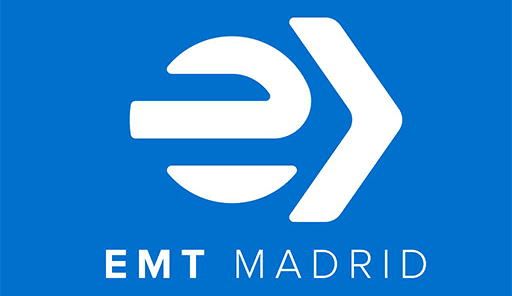
3.2 Madrid Buses (EMT) – Routes, Night Buses & Airport Shuttle
The Municipal Transport Company of Madrid ( EMT ) is in charge of Madrid’s ultra efficient bus system. Comprised of over 200 bus lines with roughly 2,000 buses in operation, the bus system in Madrid is a great way to get around the city as it can take you to many places that the Madrid metro can’t reach. The EMT buses are blue city buses that operate within the central zone of Madrid – meaning they do not travel throughout the entire province of Madrid, but only the city of Madrid. Skip ahead for more info on how to travel through the Madrid province by bus .
Need to get to the Madrid airport ? The Madrid bus system is the cheapest way to get to Madrid Barajas Airport! They run all year round and the airport shuttle even runs for 24hrs a day! Read more in our guide to Madrid Airport Transportation Options and Discounts .
- View the Interactive Bus Map
- View the Tourist Bus Map
Bus Operating Hours
Typically, buses run from 06:00 – 23:30 with frequency ranging from every 5-20 minutes on weekdays. On weekends and holidays they run from 07.00-23:30 and with less frequency.
Night Buses
Madrid’s night buses, known as Búhos or Owls, run from 23:30 – 6:00 in 27 different routes. All routes start and end at the central Plaza de Cibeles. You can find the night bus schedule at bus stops in the city. Also check out the night bus map here .
Bus Tickets & Prices
You can access the bus with both your monthly transport card and the Multi Card which we cover above . If you have 10 rides loaded to your Multi Card you simply board the bus and tap your ticket. If you need to purchase a single ride you can do so right from the bus driver.
Airport Shuttle
Though you can certainly get to the airport via the standard metro and bus routes, there is a great airport shuttle available as well. It runs every 15 minutes during the day and every 35 during the night, stopping at Cibeles and Atocha. Tickets for the shuttle cost 5€. For more details, click here .
Electric Buses
Madrid is introducing eco friendly buses to the city, starting with lines 001 and 002 which operate within some of Madrid’s more heavily used routes.

3.3 Metro Ligero Madrid – The Light Rail of Madrid
The Metro Ligero is Madrid’s Light Rail system. It’s an above ground metro system that connects Madrid through 4 lines and over 50 stations. However, this transport system is different from the Madrid Metro as it connects travelers to the less central areas of the city. You will find them more in the suburban areas of Madrid, connecting Zone A with zone B1, B2 and B3.
Light Rail Maps
- View the Light Rail Map
- View the Madrid Metro & Light Rail Combo Map
Light Rail Operating Hours
Metro Ligero lines ML1-ML3 share the same hours as the Madrid Metro day hours (6:00 – 01:30. And line ML4 runs from 5:00 – 00:45.
Light Rail Lines
Get a better look at how the Metro Ligero connects with the Madrid Metro by checking out each of the four lines below. The CRTM has layed out all the Metro Ligero lines, stops and connections for you to easily plan your commute around Madrid.
Additionally, make sure to take a look at each individual stop on the Metro Ligero routes.
- View the Metro Ligero Lines
- View the Metro Ligero Stations
Light Rail Tickets & Prices
- With the standard Multi Card pass and zone A monthly pass you will have access to the ML1 line. Single tickets cost between 1.50€ – 2.00€ and 10 ride tickets cost 12,20€.
- To access the ML2 and ML3 lines you will need to top up an additional pass to your Multi Card or pay a supplement with your monthly pass. Single tickets/supplement costs 2.00€ and 10 ride tickets cost 12,20€.
- If you plan your trip ahead you can combine your Madrid Metro access and your Metro Ligero access in one top up. Single combo tickets cost 3.00€ and 10 ride combo tickets cost 18.30€.
- To access the ML4 (Parla Tram) you will need to top up an additional pass to your Multi Card or pay a supplement with your Monthly Pass. Single tickets cost 1.30€ and 10 ride tickets cost 8.50€.
For all details on these tickets and fares, please refer to the official website of the Consorcio de Transportes de Madrid.

3.4 Cercanías Madrid – The Regional Trains of Madrid
Like the Metro Ligero, the Cercanías Madrid is an above ground train system. However, the Cercanías system takes travellers through the entire region of Madrid. Not just the suburbs of the of Madrid city, but the actual province of Madrid. The Cercanías trains operate in partnership with Spain’s high speed train network – called Renfe – allowing it to be fast, reliable and comfortable. With 9 lines and over 90 stations, Cercanías offers great connections to the small towns and areas within the Madrid region.
Cercanías Maps
- View the basic Cercanías Station Map
- View the detailed Madrid Cercanías Map
Cercanías Operating Hours
The Cercanías Madrid trains run everyday from 5:30 – 23:30.
Cercanías Lines
Get a better look at how the Cercanías system connects with the Madrid Metro by checking out each of the 9 lines below. The Concorcio de Madrid has layed out all the Cercanías lines, stops and connections for you to easily plan your commute around Madrid.
- View the Cercanías Madrid Lines
- View the Cercanías Madrid Stations
Cercanías Tickets & Prices
- If you have the monthly transport pass you will have access to the Cercanías stations that are located within the zones that your pass covers. If you need to go beyond the zones of your monthly pass, you will need to pay a supplement that covers the distance you will be going. Prices vary based on where you start and end your journey, so please check the detailed pricing table here .
- The Cercanías system is operated by Renfe, which means that you cannot access these trains with your Multi Card. They have their own ticket systems and zones. For a detailed pricing info please check the pricing tables here .

Unlike the rest of the Madrid public transport system, the suburban buses are run by a network of private companies that travel throughout the region of Madrid. There are over 300 lines in operation with roughly 20,000 operations each day. These buses depart from various central stations in Madrid, connecting travelers to hundreds of stops outside of the city.
Suburban Bus Maps
- View the complete Suburban Bus Route Map
- View the Regional Suburban Bus Maps
Suburban Bus Operating Hours
Typically the suburban buses run between 6:00 – 23:30. However some buses will operate at night as well. Please refer to the official time table for each region here .
Suburban Bus Lines
Use the trip calculator facilitated by the Consorcio de Transportes de Madrid to get all the information on the suburban bus lines that you need to take.
- View the Suburban Bus Line Calculator
You can access these suburban buses at the following major stations in Madrid: Plaza de Castilla, Avenida de América, Plaza Elíptica, Príncipe Pío and Moncloa
Suburban Bus Tickets & Prices
- If you have the monthly public transport pass you will have access to the suburban bus lines that are located within the zones that your pass covers. If you need to go beyond the zones in your monthly pass, you will need to pay a supplement that covers the distance you will be going. Prices vary based on where you start and end your journey so please check the detailed pricing table here .
- Single tickets and 10 trip tickets are available but are not associated with the same Multi Card that we have mentioned throughout this article. The suburban bus system has it’s own tickets and pricing system. Single ride tickets can be purchased directly from the bus and 10 trip tickets can be bought at the bus stations and other licensed ticket points.
For all details on these tickets, fares and where to buy them, please refer to the official website of the Consorcio de Transportes de Madrid.
4. Traveling Long Distance Around Spain
4.1 long distance trains.
Renfe is Spain’s high speed train network that connects travelers all over Spain. The trains can also take travelers across the border form Spain to Portugal and France. Check out the official Renfe website to learn more. Also check out the new lost-cost train routes offered by Ouigo .
4.2 Long Distance Buses
There are several private bus companies that can take you all over Spain and beyond. The most popular being Avanza Group , Flixbus and Alsa .
You can compare the train times, destinations and prices among Spain’s top long distance train and bus operators by using Trainline ! Additionally you can check out trains and buses across Europe and compare those prices as well. If you want to compare across all modes of long distance transportation (bus, train, car rental & flights) we recommend that you use Comparabus !
Looking for additional travel options? Check out our other articles on Bike and Scooter Rentals as well as our top recommendations for car sharing and car services including available promo codes to save money.
5. Private Transport & Alternative Transport Options
Even though Madrid’s public transport system can easily get you where you need to go, you might be looking for some alternative options. Whether you want to get to your destination faster , you’d just like some privacy or maybe you’re trying to adopt a more eco friendly lifestyle . Whatever your case might be, Madrid is home to some great private transport and alternative transport options that suit everyone’s preferred lifestyle.
5.1 Renting e-Scooters, e-Bikes & Motor Scooters in Madrid with Discounts
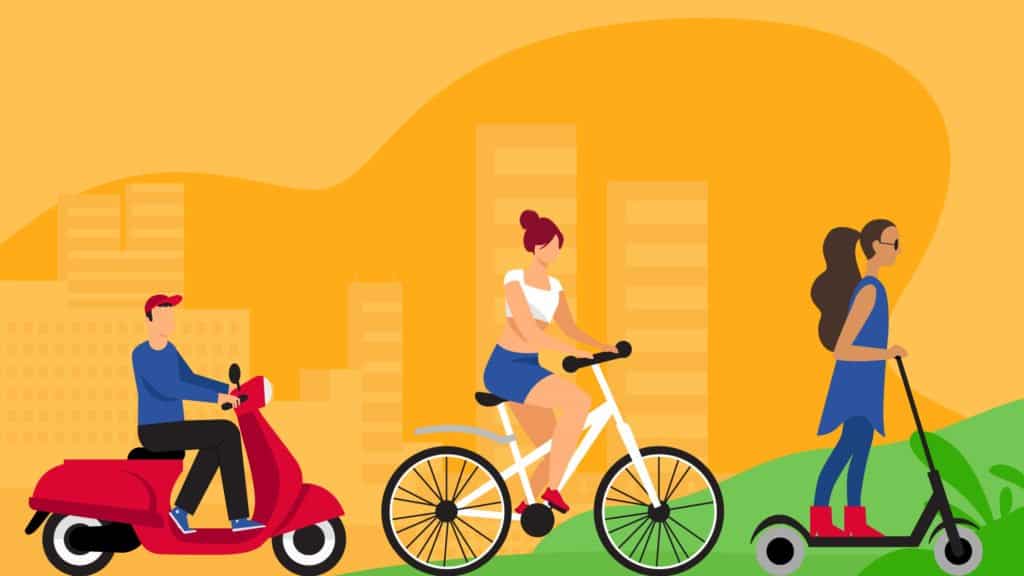
Electric transportation is on the rise around the world and Madrid is no different! If you’re looking for a unique and affordable way to travel around Madrid while reducing your carbon footprint, then we recommend downloading one of the many apps out there! In Madrid you’ll find e-Scooters (kick scooters), e-Bikes and Motor Scooters parked in the streets just waiting to be used. All you need to do is download the corresponding app, hire one of them and off you go!
Check out our detailed list of top recommended e-Scooter, e-Bike and Motor Scooter companies in Madrid companies in the city and receive some exclusive discounts on your next ride !
Madrid is a big city. It can take time to get from one end of the Spanish capital to another with public transportation. Many people would prefer to drive to to their destination but they don’t have the means to own a car themselves. This is where car rentals , carsharing and ridesharing comes into the fold! You can either hop in a car and be driven across town (rideshares like Free Now & Uber ), or drive an electric car yourself from one point of the city to another (carshare, e.g. Free2Move ), or even rent a car for several days to explore beyond the Madrid city limits. Whatever it is, Madrid has something for you!
Take a look at our comprehensive guide to Car Rentals, Carsharing & Ridesharing in Madrid to find the top companies in the city and also receive some great discounts for your next trip !
Save 5€ on your next taxi ride by downloading the Free Now app and using Citylife’s exclusive promo code! It’s quick, reliable and incredibly easy!
6. Make Your Transport Card Appointment with our Free Service
If you’re struggling to make the appointment to obtain your public transport card, we can help! Fill out this form below, follow the instructions and we will let you know the available options!
Date of Birth (DD/MM/YYYY)
Your Phone (WhatsApp) Number
EU citizen or Non-EU citizen? —Please choose an option— EU citizen Non-EU citizen
Estimated Date of Arrival in Madrid - DD/MM/YYYY
Duration of Stay in Spain (in months)
Your University/Work in Madrid —Please choose an option— ACADEMIA CONTACTO ACCENT AIL ALCALINGUA APUNE AU PAIR IN SPAIN BEDA BOSTON COLLEGE BOSTON UNIVERSITY BRITISH COUNCIL BRITISH LANGUAGE CENTRE CALIFORNIA STATE UNIVERSITY CÁMARA DE COMERCIO IFE CAPA CARDENAL CISNEROS CEA CENTRO DE ESTUDIOS FINANCIEROS CENTRO DE NUEVAS PROFESIONES CEV CIEE CLUB EOI CLUB ESTUDIANTES CONVERSA SPAIN CUNEF DUKE UNIVERSITY EAE EBS MADRID EF MADRID EFTI ÉLITE Lenguas ENFOREX EOI CARABANCHEL EOI EMBAJADORES EOI GOYA EOI JESÚS MAESTRO ESCP ESDI ESERP BUSINESS SCHOOL ESIC ESCUELA DON QUIJOTE ESCUELA ENFOREX ESCUELA OFICIAL DE IDIOMAS ESTUDIO SAMPERE EUDE EUREKA FULBRIGHT FUNDACIÓN EOI FUNDACIÓN ORTEGA MARAÑON GBSB BUSINESS SCHOOL GEORGE WASHINGTON GEORGETOWN HAMILTON HELPMADRID HOMOLOGATION HSS IBS Next IEB IES ABROAD IFC IMF BUSINESS SCHOOL IN MADRID INHISPANIA IN2SPANISH LANGUAGE SCHOOL INSTITUTO CERVANTES INSTITUTO EMPRESA INSTITUTO VOX INTERNATIONAL HOUSE IRONHACK ISDI JOHN HOPKINS KINGS TRAINING MADRID PLUS MARIST COLLEGE MARQUETTE UNIVERSITY MEDDEAS MIDDELBURY NEXT IBS NLC Madrid NYU OISE OSTELEA OTHER PARANINFO SAINT LOUIS UNIVERSITY STANDFORD UNIVERSITY SUFFOLK UNIVERSITY SUNY ALBANY SYRACUSSE TANDEM TT MADRID TUFTS SKIDMORE UCEAP UCETAM UDIMA UNED UNIVERSIDAD ANTONIO NEBRIJA UNIVERSIDAD AUTÓNOMA UNIVERSIDAD CAMILO JOSÉ CELA UNIVERSIDAD CARLOS III UNIVERSIDAD CEU SAN PABLO UNIVERSIDAD COMPLUTENSE UNIVERSIDAD DE ALCALÁ UNIVERSIDAD DE VILLANUEVA UNIVERSIDAD EUROPEA DE MADRID UNIVERSIDAD FRANCISCO DE VITORIA UNIVERSIDAD INTERNAC. MENÉNDEZ PELAYO (UIMP) UNIVERSIDAD POLITÉCNICA DE MADRID UNIVERSIDAD PONTIFICADA DE COMILLAS UNIVERSIDAD REY JUAN CARLOS UNIVERSITY OF CALIFORNIA USAC VANDERBILT UNIVERSITY VASSAR-WESLEYAN VATEL MADRID VAMOS MADRID WILD CODE SCHOOL WIP WUSTL OTHER...
He leído y acepto la Política de Privacidad / I have read and accept the the Privacy Statement!
Yes, please!
Teniendo en cuenta el artículo 21 de la Ley 34/2002 de Servicios de la Sociedad de la Información y Comercio Electrónico y nuestra Política de Privacidad , solicitamos su consentimiento para la suscripción y envío nuestra newsletter. / Taking into account the article 21 of law 34/2002 of services of the information society and electronic commerce and our Privacy Policy , we request your consent for the subscription to send you our newsletter.
There are several different types of tickets for the Madrid metro. From a quick pay as you go type metro card to the monthly subscription card known as the abono. Check out our chapter called “ Ticket Options & Prices ” to read about how to get a Madrid metro card.
If you have lost your Madrid metro card then all you need to do is cancel the old card and order a new one. You can either do this online or at any CRTM website! For more details take a look at our article on replacing a lost or stolen metro card .
The tourist travel pass for Madrid is loaded onto a red plastic card called the Multi Card. You simply top up the card with a tourist travel pass choosing how many days you want the pass for. This is all done at any Madrid metro station at the machines. Check out our chapter called “ Madrid Tourist Travel Pass ” for more information on how to get a tourist travel pass for Madrid.
Getting around in Madrid by public transport is easy and quick. In general, the Madrid metro and the Madrid bus services are the best way to get around Madrid. Check out our chapter called “ Madrid Transport Options – A Comprehensive Outline ” for a break down on all transport types available in Madrid.
The cost to ride the metro in Madrid depends on which ticket you use and where you go. Single rides can start from 1,5€ and monthly passes can start between 20€ (abono joven) to 55€ (Zone A, normal tariff). Check out chapter “ Ticket Options & Prices ” for a full breakdown of all costs related to public transport in Madrid.
The Madrid metro does go to the airport, but you need to pay an additional supplement of 3€ in addition to the metro pass ticket. Simply visit any ticket machine at any metro stop to find out how the supplement works.
There are several options to travel from the Madrid airport to the city. You can take the Madrid metro, the bus shuttle, a taxi or a car service. Check out our article called Madrid Airport Transportation for all the details plus some amazing discounts!
Typically, the metro runs from 06:00 – 01:30 with trains arriving every 2-15 minutes. Frequency is dictated by the city’s rush hours. At night you have the Madrid night buses, also known as Búhos, that run in and around Madrid (27 different routes). All routes start and end at the central Plaza de Cibeles. You can find the night bus schedule at bus stops in the city. For a night bus map click here .
To pay for the metro in Madrid you must have either your personal transport card or the Multi Card. You either top up your monthly subscription or you top up your single ride/10 rides to your card at the machines in any metro station. You can pay with cash or card.
If you lost your Madrid metro card you can print a replacement for 6€ at any of the major Metro stations in Madrid – Sol, Plaza de Castilla, Moncloa, etc. You do not need an appointment (cita previa), you can simply go there and get your metro card replaced.
There is no student metro card in Madrid nor a special price for students. Madrid sets its prices based on age groups. Those under the age of 26 only pay 20€ per month for their monthly transport plan (abono joven). It includes all zones. Those older than 26 will need to buy a monthly plan (abono) according to the zones they need to travel. For more info on pricing, please refer to our chapter called “ Monthly Pass – Prices and Where to Buy “.
If you need to rent a car in Madrid then you have several options available. You can either use one of the many carsharing apps to rent an electric car to use within the community of Madrid. Or, you can rent a full sized car from a classic car rental company for a longer period which you can take outside of the city limits. Check out all the options by reading our guide on How to Rent a Car in Madrid .
If you are looking for a more eco-friendly kind of transportation, there are many options for renting bikes, e-bikes and e-Scooters in the city of Madrid. To see all the different companies that are running in Madrid, take a look at our article called Best eScooters, Motor Scooters, Bike Rentals & Segway Rentals in Madrid .
More Articles About Moving to Spain :

Lycamobile – Best Pay as You Go SIM Card Deals for Spain & Europe

Finding the Best SIM Card for your Time in Spain

Relocate to Madrid with our Support Package

Your Step by Step Guide to Apply for a NIE or TIE in Madrid 2024
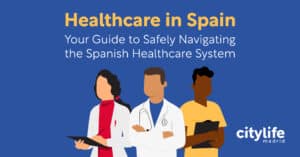
Healthcare in Spain – Your Guide to Safely Navigating the Spanish Healthcare System
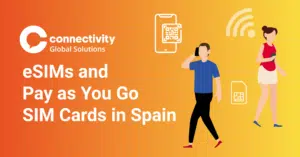
Connectivity Mobile – eSIMs and Pay as You Go SIM Cards in Spain
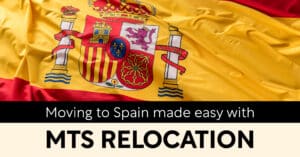
Moving to Spain Made Easy With our Friends at MTS

The Ultimate Guide to Best Banks for Students & Expats in Spain

Best Health Insurance in Spain for International Students & Expats for 2024

Citylife Housing – The Ultimate Living Experience in the Heart of Madrid!
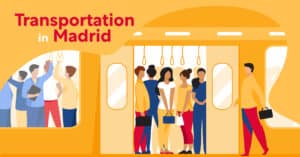
Getting Around Madrid – Your Guide to Madrid’s Public Transport System

The Ultimate Guide to Student Housing in Madrid
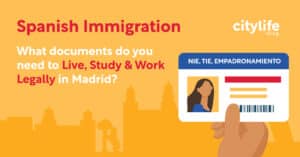
Spain Immigration Explained – What documents do you need to study, work or live legally in Spain?
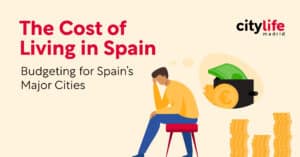
The Cost of Living in Spain – Budgeting for Spain’s Major Cities
Leah warner.
Leah has been living in and exploring Madrid since 2013 when she moved to the city for a simple summer abroad. She started the Citylife Blog in 2014 with the goal to share everything there is to know about her favourite place on earth!
12 Comments . Leave new
Hello! I cannot find my Unibersity in the list: Alfonso X el Sabio university (UAX). I cant get a public transport card when I will attend classes at that university?
Hi! If you don’t have a Spanish phone number, does that mean you can’t order a public transport card? Thanks!
Hey there Manon! You do need to have a Spanish phone number in order to order the madrid metro card. But you are more than welcome to use the Citylife office number and address! We will save the card at our office until you are ready to pick it up.
Calle Gran Vía 22 – Duplicado, 2nd Floor, 28013 Madrid, Spain +34 915 296 673
Hi! If my friends and I take the metro using 1 multi card, does it mean we can tap the same card 4x to enter?
Hey there Crystal! You can share the Multi-card as many times as you need.
I charged the card for 10 trips for A zone by mistake, can I change it to compindo zone to include the B1 zone any by the difference in price
How many individuals can use a single multi card. If we have 6 people in our travel party and we’re only in Madrid a few days, can all 6 of us travel using the same card?
Hi there Jarom! Yes! You can share the multicard with several people. You will just need to top it up more often.
Can I go to Toledo with my student pass?
Yes. You can take the ALSA bus for free with public transportation card from the Plaza Eliptica bus station.
I have a problem. The internet page to buy the card has an error. when I type in my credit card name and click “siguiente” nothing happens. The page loads itself again. what can I do?
Hi Sarah! Sometimes the page gets stuck and you need to close it down and start again. Another problem could be that your card is not accepted. Unfortunately I can’t give you further info about the problem unless I see it. Feel free to send an email to [email protected] and we can help you order your transport card.
Leave a Reply Cancel reply
Your email address will not be published. Required fields are marked *
Sign me up for the newsletter!
Post Comment
Neighborhoods to Know
Best Madrid Hotels
Top Things to Do
Free Things to Do
Things to Do With Kids
Madrid's Art Museums
Guide to Retiro Park
Shopping in Madrid
Day Trips From Madrid
Food to Try in Madrid
Madrid's Top Restaurants
Best Bars in Madrid
Best Time to Visit
Weather & Climate
Madrid-Barajas Adolfo Suárez Airport
Public Transportation
Getting Around Madrid: Guide to Public Transportation
How to use the metro and EMT buses
Siqui Sanchez/Getty Images
As Spain's capital and largest city, Madrid teems with must-see sights , scores of excellent bars and restaurants , and a nightlife scene unlike any other. In order to make the most of your time, figuring out the city's extensive public transportation network is a must.
Luckily, it's not as overwhelming as it seems. Public transportation in Madrid is efficient and easy to navigate. Here's everything you need to know about getting around this thriving, happening city like a local.
How to Ride the Madrid Metro
By far, the most frequently used method of public transportation in Madrid is the metro . Stations can be identified by a red and white diamond-shaped sign marked "Metro" with the name of the stop below it. As you make your way into the station, you'll be able to see which lines (identified by number and color) that location serves. Follow the blue signs that say "Entrada."
Once inside the station, you'll need to purchase a public transport card from one of the machines. Simply follow the self-explanatory instructions on the screen (changing the text to your preferred language if need be). Once you have your card, you can then load your metro trips onto it, eliminating the need for paper tickets. Single journey and 10-trip passes are available .
To access the metro, scan your card over the electronic reader at the turnstiles. Do the same as you exit once you reach your destination.
Madrid Metro Fast Facts :
- Cost : €2.50 for the transport card; single journeys range from €1.50–€2. A 10-trip ticket costs €12.20.
- How to pay : With cash or card (where available) at the electronic ticket machines.
- Hours of operation : 6 a.m.–1:30 a.m.
- Transfer information : At the transfer station, follow the signs indicating where to board the train for your final destination. Once you arrive, exit the station as normal.
- Accessibility : More than two thirds of Madrid's 300-plus metro stations are completely accessible, and that number is increasing every year.
The Madrid Metro website offers an easy-to-use trip planner that can help you plan your route.
Riding the EMT Bus
Another popular method of public transportation in Madrid is the bus, with more than 200 lines serving all corners of the city. Local buses are blue and are operated by the company EMT. All bus stops throughout the city have digital screens showing the wait time until the arrival of the next bus from each line serving that stop.
A single-journey ticket on the bus costs €1.50 and can be purchased from the driver. The largest bill admitted is five euros. If you've purchased a 10-journey ticket on your metro card, you can also use these trips on the bus.
Once on board the bus, keep an eye on the screens inside which show the next stop. In order to signal to the driver that you need to get off, simply press the nearest button.
Normal bus service runs from 6 a.m.–11:30 p.m. on weekdays and 7 a.m.–11 p.m. on weekends. After hours, a limited number of night buses (known as búhos ) are available on some lines.
To start exploring, use the route planner on the EMT website.
The Cercanías Commuter Rail
If you need to go further afield, Madrid's commuter rail system—known as Cercanías —is incredibly useful. Many popular day trips from Madrid are accessible via these trains.
Cercanías stations are marked with a backwards white C against a red circular background. Inside, purchase your tickets at the electronic kiosk or from an employee at the desk. Hold onto your ticket throughout the entire trip—you'll need it both to access the train as well as to leave the station at your destination.
Information on routes and timetables can be found on the Cercanías website .
Airport Transportation
Travelers headed to or from Madrid-Barajas Airport have several options.
- Airport Express shuttle : Connects the city center (with stops at Atocha train station and Plaza de Cibeles) with all terminals of the airport. Luggage racks are available. Tickets cost five euros and are purchased on board.
- Metro : Line 8 from the Nuevos Ministerios station stops at the airport, with access to all four terminals. An additional three-euro supplement is charged.
- Cercanías : Line C1 connects Atocha station to terminal T4 at the airport. Tickets cost €2.60 for a single journey and €5.20 for a return trip. If you have a ticket for the AVE high-speed train , this journey is free. Ask a staff member for help if need be.
Official Madrid taxis are white with a red diagonal stripe on the front doors. You can hail one yourself on the street, online , or by calling +34 915 478 200. Another option is to have your hotel call a cab for you, or head to a designated taxi stop (indicated by a blue sign reading TAXI in white letters).
Biking in Madrid
If you'd like to see the city from two wheels and get in a great workout at the same time, you're in luck. Madrid's bike share program, BiciMAD , offers dozens of docking stations all around town. One, three, and five-day passes are available and can be purchased at the stations themselves.
Renting a Car
While it may seem like renting your own vehicle allows you more freedom and accessibility, it's not the best idea when visiting Madrid. The city's streets can be confusing to navigate for drivers unfamiliar with the area, traffic in central areas tends to be heavy throughout the day, and parking is next to impossible. If you're used to automatic cars, these tend to be more expensive to rent than their manual counterparts, which are more commonly driven in Spain. Save yourself the trouble and stick to public transportation.
Tips for Getting Around Madrid
- Many of the main sights within Madrid's city center—such as Puerta del Sol , Plaza Mayor , and the Royal Palace —are within walking distance from one another. Consider exploring on foot.
- Late at night, the only public transportation available are taxis and the búho buses , and even these don't operate on all normal bus lines. Plan your night out accordingly.
- Renovations and other improvement works are a near constant with the metro, and some stations may be temporarily closed as a result. Keep an eye on the Metro website for up-to-date information.
- Though generally safe, Madrid's public transportation network does draw its fair share of pickpockets, particularly at peak travel hours when trains and buses are more crowded. Always be aware of your surroundings and keep an eye on your things.
Getting Around Paris: Guide to Public Transportation
Your Trip to Madrid: The Complete Guide
Getting Around Frankfurt: Guide to Public Transportation
Getting Around Beijing: Guide to Public Transportation
Getting Around Mexico City: Guide to Public Transportation
Getting Around Seattle: Guide to Public Transportation
Getting Around Salt Lake City: Guide to Public Transportation
Getting Around Detroit: Guide to Public Transportation
Getting Around Pittsburgh: Guide to Public Transportation
Getting Around Prague: Guide to Public Transportation
Venice's Vaporetto Transportation System: A Complete Guide
Getting Around Lisbon: Guide to Public Transportation
Getting Around Marseille: Guide to Public Transportation
Getting Around Shanghai: Guide to Public Transportation
Getting Around Barcelona: Guide to Public Transportation
Getting Around Busan: Guide to Public Transportation
- Top 10 Things to Do
- Top 10 Places to See
- Top 10 Best Cities to Visit
- Top 10 Best Holiday Resorts
- Top 10 Best Museums
- Top 10 Historical Sites
- Top 10 Best Theme Parks
- Top 10 Best Water Parks
- Top 10 Best Beaches
- Top 10 Best Festivals
- San Sebastian
- Santiago de Compostela
- Benidorm, Costa Blanca
- Magaluf, Majorca
- Benalmadena, Costa del Sol
- Playa d’en Bossa, Ibiza
- Sant Antonio, Ibiza
- Alcudia, Majorca
- Es Pujols, Formentera
- Torremolinos, Costa del Sol
- Playa del Ingles, Gran Canaria
- Corralejo, Fuerteventura
- Puerto del Carmen, Lanzarote
- Gran Canaria
- Fuerteventura
- Costa Blanca
- Costa Brava
- Costa del Sol
- Costa Dorada

Madrid Metro: Map, Hours, Lines, Stations, Tickets + Tips
The metro system in Madrid is one of the most extensive and efficient in the world. It is a great way to get around the city quickly and conveniently. Whether you’re a tourist or a local, the metro is an essential part of Madrid’s transportation infrastructure. Here we’ll explore the Madrid metro system, including its history, fares, hours, tickets, lines, stations, maps and tips for getting around.
Table of Contents
The Madrid metro system opened in 1919. It is one of the oldest metro systems in the world. Since then, it has grown to become one of the largest and most modern systems in Europe, with over 300 stations and 12 lines.
Metro Hours?
The Madrid Metro runs from 6:00 am until 1:30 am every day, with slightly different hours on weekends and holidays. The frequency of trains varies depending on the time of day and the line, but most lines have trains running every few minutes during peak hours.
It is important to note that the last train of the night may arrive at its final destination a few minutes after 1:30 am, so be sure to check the exact timetable of your desired line to plan your journey accordingly.
Additionally, during certain holidays or special events, the metro may operate on a modified schedule, so it’s always a good idea to check for any updates or changes before heading out.
Metro Zones?
The Madrid Metro uses a zone system to determine fares. Zone A covers the city center and most tourist attractions, while the outer zones extend beyond the city limits.
The frequency of metro trains?
The frequency of metro trains in Madrid varies depending on the time of day and the line. During peak hours, which are typically from 7:30 am to 9:30 am and from 6:00 pm to 8:00 pm on weekdays, trains on most lines run every 2-3 minutes.
No Regrets Booking Advice

Outside of peak hours, the frequency of trains is typically between 4-7 minutes. Some lines may have slightly longer intervals between trains, especially during off-peak hours, but overall the Madrid Metro is known for its high frequency and reliability.
You should check the timetable for your desired line before traveling to ensure that you don’t have to wait too long for the next train.
Metro tickets prices?
The prices for metro tickets in Madrid are based on a zone system, with Zone A covering the city center and most tourist attractions. As of 2023, a single trip within Zone A costs €1.50, while a 10-ride ticket (called a “Metrobus”) costs €12.20.
For those planning to use the metro frequently, there are also options for unlimited travel over a certain period of time, such as the 1-day Tourist Ticket for €8.40 or the 30-day Abono Transportes pass for €54.60.
The fares and zones may be subject to change, so be sure to check the official Madrid Metro website for the most up-to-date information.
The different types of metro tickets in Madrid?
There are several types of metro tickets available in Madrid, depending on your travel needs and how often you plan to use the metro.
Single Ticket
A single ticket allows for one trip within a specific zone, with Zone A covering the city center and most tourist attractions. Aa single trip within Zone A costs €1.50.

10-Ride Ticket (Metrobus)
A 10-ride ticket, also known as a “Metrobus,” allows for 10 trips within a specific zone. A 10-ride ticket for Zone A costs €12.20.
Tourist Ticket
The Tourist Ticket allows for unlimited travel on all public transport, including the metro, buses, and trains, for a set period of time. The 1-day Tourist Ticket costs €8.40 and is valid for 24 hours from the time of purchase.
The Multi Card is a rechargeable card that can be used for multiple trips on the metro and other forms of public transport. The initial cost for the card is €2.50, and you can load it with a specific amount of credit depending on your travel needs.
Abono Transportes Pass
The Abono Transportes pass allows for unlimited travel on all public transport, including the metro, buses, and trains, for a set period of time. The 30-day pass for Zone A costs €54.60.
Prices and availability of these tickets may be subject to change, so be sure to check the official Madrid Metro website for the most up-to-date information.
How to reach Madrid’s main monuments by metro?
Madrid’s metro system is an efficient way to reach many of the city’s main monuments and attractions . Here are some of the most popular metro stops for reaching key landmarks:
- Puerta del Sol: The Puerta del Sol is located in the heart of the city and is served by several metro lines, including Line 1, Line 2, and Line 3. The closest metro stop is Sol.
- Plaza Mayor: The Plaza Mayor is a short walk from the Sol metro stop on Line 1, Line 2, and Line 3.
- Royal Palace of Madrid: The Royal Palace of Madrid is located near the Opera metro stop on Line 2 and Line 5.
- Prado Museum: The Prado Museum is located near the Atocha Renfe metro stop on Line 1.
- Reina Sofia Museum: The Reina Sofia Museum is located near the Atocha metro stop on Line 1.
- Retiro Park: The Retiro Park is located near the Retiro metro stop on Line 2.
- Santiago Bernabeu Stadium: The Santiago Bernabeu Stadium, home of Real Madrid, is located near the Santiago Bernabeu metro stop on Line 10.
A metro pass, also known as an Abono Transportes pass , is a convenient way to use the Madrid metro system if you plan to travel frequently or for an extended period of time.
The pass allows for unlimited travel on all public transport, including the metro, buses, and trains, within a specific zone for a set period of time. The cost of the pass depends on the zone and duration selected.
The cost of a 30-day Abono Transportes pass for Zone A, which covers the city center and most tourist attractions, is €54.60. Other options include a 7-day pass for €22.60 and a 90-day pass for €139.60.
The Abono Transportes pass is a rechargeable card that can be loaded with the desired duration and zone. The pass can be purchased at metro stations, bus stations, and authorized retailers. To use the pass, simply touch it to the card reader on the metro turnstile or on the bus or train.
Using a metro pass can be a cost-effective and convenient way to travel around Madrid if you plan to use public transport frequently during your stay.
How do I buy a metro ticket in Madrid?
There are several ways to buy a metro ticket in Madrid:
- Ticket machines: Metro ticket machines are located in every metro station and offer the option to purchase single tickets, 10-ride tickets, and Multi Cards. Simply select the desired ticket or card and follow the on-screen instructions to complete the purchase.
- Ticket counters: Some larger metro stations have ticket counters where you can purchase tickets from a staff member. This may be a good option if you have questions or need assistance.
- Authorized retailers: You can also purchase metro tickets and passes at authorized retailers, such as tobacco shops, newsstands, and convenience stores.
- Online: You can also purchase some types of metro tickets and passes online through the official Madrid Metro website or mobile app.
You should know that the ticket machines and online options may require a credit or debit card. Also note that the metro tickets and passes are based on a zone system.
Madrid metro stations, lines, stops, changes and connections?
Madrid’s metro system consists of 12 lines and over 300 stations, making it a convenient way to travel around the city. Here’s a brief overview of the lines, stations, stops, and connections:
This line runs from the Pinar de Chamartín station in the north to the Valdecarros station in the southeast, passing through the city center and major tourist attractions such as Sol, Gran Vía, and Atocha.
This line runs from the Las Rosas station in the southeast to the Cuatro Caminos station in the northwest, passing through the city center and major tourist attractions such as Retiro Park and the Royal Palace.
This line runs from the Villaverde Alto station in the south to the Moncloa station in the northwest, passing through major tourist attractions such as the Prado Museum and the Reina Sofia Museum.
This line runs from the Argüelles station in the northwest to the Parque de Santa María station in the south, passing through the city center and major tourist attractions such as Gran Vía and the Royal Palace.
This line runs from the Alameda de Osuna station in the northeast to the Casa de Campo station in the west, passing through major tourist attractions such as the Santiago Bernabéu Stadium and the Prado Museum.
This line runs from the Moncloa station in the northwest to the Ciudad Universitaria station in the west, passing through major tourist attractions such as the Royal Palace and Retiro Park.
This line runs from the Pitis station in the northwest to the Hospital del Henares station in the east, passing through major tourist attractions such as the Plaza Castilla and the Cuatro Torres Business Area.
This line runs from the Nuevos Ministerios station in the northwest to the Aeropuerto T4 station in the northeast, providing service to Madrid’s main airport.
This line runs from the Arganda del Rey station in the southeast to the Plaza de Castilla station in the north, passing through major tourist attractions such as the Prado Museum and the Gran Vía.
This line runs from the Hospital Infanta Sofía station in the north to the Puerta del Sur station in the south, passing through major tourist attractions such as the Santiago Bernabéu Stadium and the Royal Palace.
This line runs from the Plaza Elíptica station in the south to the La Peseta station in the west, passing through major tourist attractions such as the Royal Palace and Retiro Park.
This line runs from the Metropolitano station in the northwest to the Hospital del Henares station in the east, passing through major tourist attractions such as the Plaza de Castilla and the Cuatro Torres Business Area.
To make connections between lines, look for signs indicating transfers or “correspondencias” and follow the signs to the connecting line. Some stations have multiple connections, so make sure to check the metro map or ask for assistance if needed.
Accessibility and reduced mobility?
Madrid’s metro system is designed to be accessible for individuals with reduced mobility or disabilities. Here are some of the features that make the metro more accessible:
- Elevators and escalators: Many metro stations have elevators and escalators to make it easier for individuals with mobility issues to access the platforms.
- Priority seating: Each metro car has designated priority seating for individuals with disabilities, pregnant women, and seniors.
- Wide doors and spacious platforms: The metro cars have wide doors and spacious platforms to accommodate wheelchairs and strollers.
- Audio and visual announcements: The metro provides audio and visual announcements to help passengers with visual or hearing impairments.
- Assistance points: Many metro stations have assistance points, which are marked with a blue sign with a wheelchair symbol. These points provide information and assistance for passengers with reduced mobility or disabilities.
In addition, the metro offers a special service for individuals with disabilities called the “Tarjeta Dorada” , which provides discounted fares and priority access to elevators and escalators. To obtain this card, individuals must provide proof of disability or reduced mobility.
Share post:
- PUBLIC TRANSPORT
Top Selling in Madrid
More on Madrid
6 Best Theme Parks in Madrid: What to Expect? Best Tickets
Best luggage storage & lockers in madrid: where to find advice, madrid – practical city & travel guide to madrid, parque warner bros madrid: what to see + tickets + tips, top 10 best nightclubs in madrid: best areas + insider advice, make the most of your layover in madrid barajas airport tips, 8 of the best tapas restaurants in madrid to try, reina sofia museum in madrid: what to see + tickets + tips, zoo aquarium de madrid: what to see + tickets + tips, top 11 best live music venues in madrid for a great night out, key spots for the supernatural-loving tourist in madrid, madrid airport express bus to city center: emt, exprés aeropuerto.
We aim to provide the best of Spain's sights and sounds, attractions, sights, museums, cities, holiday resorts. The website has no connection with any civic organization.
- Top Attractions
- Top Holiday Resorts
- Top Museums
- Top Historical Sites
- Top Beaches
- Top Theme Parks
- Top Festivals
- Alhambra Palace
- Alcazar of Seville
- Best of Gaudi’s
- Royal Palace Madrid
- La Mezquita
- La Sagrada Familia
- Prado Museum
- Picasso Museum
- Gran Canaria 73
- Fuerteventura 72
- Formentera 38
- Costa Brava 33
- Barcelona 32
- San Sebastian 31
- Costa Blanca 29
© 2013-2023 Your Practical Travel Guide to Spain. All Rights Reserved.
- Privacy Policy
Public Transportation and Metro Rail Information
Madrid Metro
Madrid metro information.
The metro with the most number of elevators. The Madrid metro is known not just for that record but it is also deemed to be the 8th longest metro system in the world. It’s importance to the public transportation division of Madrid, Spain and its people is shown in its annual ridership of more than 560 million (2014). With 13 lines in total, serving a whooping number of 301 stations, the system measures 293 km, in length. Although it began operations way back in the 1919’s, it is still considered to be among the top 20 growing metro networks around the world. To complement the rapid transit, a light rail named Metro Ligero was opened nearly 10 years ago.
The Madrid Metro is a major mode of public transportation in the city, serving an impressive 2,500,000 passengers every day. It operates from 6 am to 2 am and does not have a 24-hour operation.
While the trains are not driverless, the Madrid Metro does offer the comfort of air conditioning and the convenience of allowing passengers to walk between platforms . The fare rates range from 1.5 to 3.00 euros .
The Madrid Metro began testing screen doors at platforms in 2010, with plans to install them in 2011. The system is operated by TFM, Metro de Madrid, and MetroOeste .
For more information about the Madrid Metro, you can visit the Madrid Metro Official Website or contact their customer service at 902 444 403 / 91 779 63 99 .
Madrid Metro Map
Map of Madrid Metro showing various lines and stations. Click on the map to enlarge it or Download Madrid Metro Map in PDF .
Overview of Madrid Metro Lines
Line 1: pinar de chamartín to valdecarros.
Line 1 of Madrid Metro provides transit between Pinar de Chamartín and Valdecarros. It encompasses 33 stops over a span of 23.8 kilometers. Notably, it holds the distinction of being Spain’s oldest metro line.
Stations include: Pinar de Chamartín (connections to Line 4 and ML1), Bambú, Chamartín (connections to Line 10 and Renfe’s Cercanías and Largo Recorrido), Plaza de Castilla (connections to Lines 9 and 10, plus intercity buses), Valdeacederas, Tetuán, Estrecho, Alvarado, Cuatro Caminos (connections to Vodafone Line 2 and Line 6), and others until reaching Valdecarros.
Line 2 Vodafone: Las Rosas to Cuatro Caminos
The Vodafone Line 2 traverses the city center from Las Rosas station to Cuatro Caminos, serving 20 stations over a total length of 14.1 kilometers.
Stations include: Las Rosas, Avenida de Guadalajara, Alsacia, La Almudena, La Elipa, Ventas (connection to Line 5), Manuel Becerra (connection to Line 6), and more until it reaches Cuatro Caminos.
Line 3: Villaverde Alto to Moncloa
Line 3 operates from north to south over a 16.4 kilometer stretch, serving 18 stations.
Stations include: Villaverde Alto (connection with Renfe Cercanías), San Cristobal, Villaverde Bajo Cruce, Ciudad de los Ángeles, San Fermín-Orcasur, Hospital 12 de Octubre, Almendrales, Legazpi (connection to Line 6 and intercity buses), and others until reaching Moncloa.
Line 4: Argüelles to Pinar de Chamartín
Line 4, stretching over 16 kilometers, caters to 23 stations.
Stations include: Argüelles (connections to Lines 3 and 6), San Bernardo (connection to Vodafone Line 2), Bilbao (connection to Line 1), Alonso Martínez (connections to Lines 5 and 10), and others until reaching Pinar de Chamartín.
Line 5: Alameda de Osuna to Casa de Campo
The Line 5 of Madrid Metro, with a length of 23.2 kilometers, serves 32 stations. It operates from southeast to northeast Madrid and is unique for its deeper level circulation in the city center.
Stations include: Alameda de Osuna, El Capricho, Canillejas (connection to intercity buses), Torres Arias, Suanzes, Ciudad Lineal (connection to intercity buses), Pueblo Nuevo (connection to Line 7), Quintana, El Carmen, and others until reaching Casa de Campo.
Line 6: Circular
Line 6, one of the two circular lines in Madrid Metro, spans approximately 23.5 kilometers and serves 28 stations. Its deep-level transit reaches up to 60 meters underground at Cuatro Caminos.
Stations include: Laguna (connection with Renfe Cercanías), Carpetana, Oporto (connection to Line 5 and intercity buses), Opañel, Plaza Elíptica (connection to Line 11 and intercity buses), Usera, and others until reaching Lucero.
Line 7: Hospital del Henares to Pitis
Line 7 operates from the northeast to the east of Madrid. Spanning almost 33 kilometers, it serves 30 stations.
Stations include: Hospital del Henares, Henares, Jarama, San Fernando, La Rambla, Coslada Central (connection with Renfe Cercanías), Barrio del Puerto, Estadio Olímpico (train change), and others until reaching Pitis (connection with Renfe Cercanías).
Line 8: Nuevos Ministerios to Aeropuerto
Line 8 operates from northeast Madrid to Barajas Airport, spanning 16.5 kilometers and serving 8 stations. Despite being the third shortest line in the system, it is among the fastest.
Stations include: Nuevos Ministerios (connection with Lines 6 and 10 and Renfe Cercanías), Colombia (connection with Line 9), Pinar del Rey, Mar de Cristal (connection with Line 4), Campo de las Naciones, Aeropuerto T1-T2-T3, Barajas, and Aeropuerto T4.
Line 9: Paco de Lucía to Arganda del Rey
Line 9 spans 38 kilometers, crossing Madrid from North to Southeast and serving 27 stations. This line reaches Rivas-Vaciamadrid and Arganda del Rey.
Stations include: Paco de Lucía, Mirasierra, Herrera Oria, Barrio del Pilar, Ventilla, Plaza de Castilla (connection with Lines 1 and 10 and intercity buses), and others until reaching Arganda del Rey.
Line 10: Hospital Infanta Sofía to Puerta del Sur
Line 10 operates from north Madrid to the southeast, spanning 36.5 kilometers and serving 31 stations.
Stations include: Hospital Infanta Sofía, Reyes Católicos, Baunatal, Manuel de Falla, Marqués de la Valdavia, La Moraleja, La Granja, Ronda de la Comunicación, Las Tablas (connection with ML 1), and others until reaching Puerta del Sur.
Line 11: Plaza Elíptica to La Fortuna
Line 11, the shortest line in Madrid Metro, serves 7 stations across a length of 8.5 kilometers.
Stations include: Plaza Elíptica (connection with Line 6 and intercity buses), Abrantes, Pan Bendito, San Francisco, Carabanchel Alto, La Peseta, and La Fortuna.
Line 12: MetroSur
MetroSur, the second circular line in Madrid Metro, serves 28 stations along a near 41-kilometer span.
Stations include: Puerta del Sur, Parque Lisboa, Alcorcón Central (connection with Renfe Cercanías), Parque Oeste, Universidad Rey Juan Carlos, Móstoles Central (connection with Renfe Cercanías), and others until reaching San Nicasio.
Line Ramal Opera to Príncipe Pío
This line consists of only two stations, linked by a 1.09-kilometer tunnel.
Stations: Opera (connections to Vodafone Line 2 and Line 5), and Príncipe Pío (connections to Lines 6 and 10, intercity buses, and Renfe Cercanías).
Madrid Light Rail (Metro Ligero) Lines and Stations
Ml1: pinar de chamartín to las tablas.
The ML1 route spans 5.4 kilometers, serving nine stations, five of which are underground.
Stations include: Pinar de Chamartín (connections to Lines 1 and 4), Fuente de la Mora (connection with Renfe Cercanías), and others until reaching Las Tablas (connection with Line 10).
ML2: Colonia Jardín to Estación de Aravaca
The ML2 covers a distance of 8.7 kilometers and serves 13 stations, three of which are underground. The maximum speed of the trains on this line is 70 km/h.
Stations include: Colonia Jardín (connections to Lines 10 and ML 3), Prado de la Vega, Colonia de los Ángeles, Prado del Rey, Somosaguas Sur, and others until reaching Estación de Aravaca.
ML3: Colonia Jardín to Puerta de Boadilla
The ML3 route covers 13.7 kilometers and serves 16 stations, only two of which are underground.
Stations include: Colonia Jardín (connection with Line 10 and ML 2), Ciudad de la Imagen, José Isbert, Ciudad del Cine, Cocheras, Retamares, Montepríncipe, Ventorro del Cano, Prado del Espino, Cantabria, Ferial de Boadilla, Boadilla Centro, Nuevo Mundo, Siglo XXI, Infante Don Luís, and Puerta de Boadilla.
Metro Madrid Metro Ligero Line 3 Map

Metro Madrid Operating Hours
Metro Madrid operates at the same hours every day of the year, from 6:00 a.m. to 1:30 a.m. Exceptions include the Pitis station on Line 7, the Puerta de Arganda-Arganda del Rey section, and some others with special schedules. Bikes can be carried free on Metro Madrid trains at all hours except from 7:30h. to 9:30 h., from 14:00 h. to 16:00 h., and from 18:00 h. to 20:00 h. on weekdays.
The frequency of Metro Madrid trains varies with the time of day, day of the week, and the line. It ranges from 3-4 minutes at peak hours on weekdays to 15-20 minutes on weekends and holidays for less frequented lines. Most of the day, however, the frequency is between 5 and 9 minutes.
Fares: Tickets and Season Tickets
Understanding Metro Madrid fare zones, tickets, and validation rules can be a bit complicated. The system is divided into different zones that include lines or sections of lines and stations with various names: Metro Madrid, Metro Sur, TMF, Metro Norte, Metro Este, and so on.
To summarize, there are three types of tickets: single (valid for one zone), combined (valid for the entire network), and the airport supplement. The price of single tickets ranges from 1.5 to 2 euros, the combined tickets cost 3 euros, and the airport supplement is an additional 3 euros. There are ten-trip versions of each ticket that result in savings. Depending on the zone, the price of these ten-trip tickets varies between 12.20 and € 18.30.
Tickets Valid for the Entire Network
Tickets valid for Zones A, B1, B2, and B3, including Metro Ligero Line 1, MetroSur, Metro Norte, Metro Oeste, TFM, and Metro Ligero Oeste, cover all of Madrid and other municipalities in the city.
- Combined single trip ticket: Priced at 3 euros, this ticket allows a single trip across the entire Metro Madrid network, on any day of the week.
- Combined 10-trip ticket: Priced at 18.30 euros, this ticket offers a discount compared to the single trip tickets.
Tickets Valid for Metro Madrid Zone A and ML1
- Single Metro Zone A ticket: Costing 1.50-2 euros, this ticket allows for a single trip between any two Metro stations in Zone A and ML1. The price is 1.5 euros for up to 5 stations, and an additional 0.10 euros for every station over 5, with a maximum price of 2 euros.
- 10-trip Metrobus ticket: Costing 12.20 euros, this ticket is valid for Metro Madrid Zone A and all EMT stations excluding the Plaza de Colón-Aeropuerto line.
MetroSur Tickets
MetroSur serves Alcorcón, Leganés, and Getafe (Zone B1), as well as Móstoles and Fuenlabrada (Zone B2).
- Single MetroSur ticket: Costing 1.50 euros, this ticket is valid for any journey on Line 12, as well as the Puerta del Sur and Joaquín Vilumbrales stations on Line 10.
- 10-trip MetroSur ticket: Priced at 11.20 euros, this ticket offers a discount for ten trips valid for the same zones as the single ticket.
MetroNorte or Line 10 Tickets
Metro Norte covers Line 10, Alcobendas, and San Sebastián de los Reyes (Zone B1).
- Single MetroNorte ticket: Priced at 1.50 euros, this ticket allows for one journey between any stations from Hospital Infanta Sofía to La Granja within MetroNorte.
- 10-trip MetroNorte ticket: Priced at 11.20 euros, this ticket offers a discount for ten trips valid for the same zones as the single ticket.
MetroEste Tickets
MetroEste serves Coslada and San Fernando de Henares (Zone B1).
- Single MetroEste ticket: Costing 1.50 euros, this ticket allows for a journey between any stations from Hospital del Henares to Barrio del Puerto.
- 10-trip MetroEste ticket: Priced at 11.20 euros, this ticket offers a discount for ten trips valid for the same zones as the single ticket.
TFM Tickets
TFM covers a section of Line 9 between Puerta de Arganda station (Zone A) and Rivas Vaciamadrid (Zones B1 and B2) as well as Arganda del Rey (Zone B3).
- Single TFM ticket: Costing 2.00 euros, this ticket allows for a journey between any of the following stations: Puerta de Arganda, Rivas-Urbanizaciones, Rivas Futura, Rivas-Vaciamadrid, La Poveda, and Arganda del Rey.
Airport Tickets
An additional fee is required to reach Barajas airport stations. There are two stations, one in the T1, T2, T3 terminals and another in the T4 terminal. The supplement is not required if traveling on a Travel Pass (except for interzonal passes B1-B2-B3 B2, B3-C1, and C1-C2) or an AENA card.
Metro Ligero Oeste Tickets
The Metro Ligero Oeste serves Madrid, Boadilla del Monte, Alcorcón, and Pozuelo de Alarcón.
- Single Metro Ligero Oeste ticket: Priced at 2 euros, this ticket allows for a journey between any ML2 station or between ML3 stations. If transferring between these lines, a new ticket must be purchased.
- 10-journey Metro Ligero Oeste ticket: Priced at 12.20 euros, this ticket offers a discount for ten trips.
About the Tickets
Children up to 4 years old do not require a ticket. Tickets can be acquired at any station, EMT kiosks, newspaper kiosks, and so on. It’s mandatory to validate the tickets at the turnstiles.
Season Tickets and Cards
Standard, youth, and senior season tickets.
Metro Madrid offers season tickets with significant discounts. There are monthly and annual season tickets available, as well as zonal and interzonal options. The price varies depending on the valid zones and the age of the user. There are Youth season tickets (up to 23 years), standard (23 to 64), and Senior (over 64 years). Discounts are also available for large families and people with disabilities. Prices for a standard ticket vary between €54 for Zone A and 131.80 for Zone E2. Youth tickets range between €35 and €97.4 for the same zones. Tickets for the elderly always cost €12.30.
30-Day Ticket
This is a season ticket valid for 30 days, with the same features as the tickets described above.
Children’s Card
This is a card for children aged 4, 5, and 6 years old. It’s free for the first request and 6 euros for subsequent replacements (in case of loss or theft).
Large Families and People with Disabilities Cards
With these cards, standard large families receive a 20% discount, special large families receive a 50% discount, and people with a degree of disability higher than 65% receive a 20% discount.
This card is intended for people over 65 years old and disabled people who meet certain financial requirements. With it, you can travel around Metro Madrid Zone A and ML1. It costs 6.20 euros.
Tourist Ticket
This card allows you to use all public transport in the community of Madrid. There are two zones: A and T. Zone A includes Metro Madrid, Renfe, and ML1, and the T-zone covers the entire network. The tickets are valid for 1, 2, 3, 5, and 7 days. Prices are 8.40, 14.20, 18.40, 26.80, and €35.40 for 1, 2, 3, 5, and 7 days in zone A, and 17, 28.40, 35.40, 50.80, and 70.80 euros for the T-zone. It’s a good choice for visitors to the city of Madrid.
Metro Madrid Zones
The Madrid Metro is divided into several zones:
- MetroMadrid (Zone A) is the central part of the system, within the city limits of Madrid. It comprises almost 60% of the network and also includes ML1.
- MetroSur (Zones B1 and B2) includes Line 12 and the last two stations of Line 10: Joaquín Vilumbrales and Puerta del Sur. It serves Alcorcón, Leganés, Getafe, Fuenlabrada, and Móstoles.
- MetroEste (Zone B1) is an extension of Line 7 from Estadio Olímpico to Hospital de Henares, passing through Coslada and San Fernando de Henares.
- MetroNorte (Zone B1) has been operating since 2007. It includes Line 10 from La Granja to Hospital Infanta Sofía. It serves the north of Madrid, Alcobendas, and San Sebastián de los Reyes.
- TFM (Zones B1, B2, and B3) is an extension of Line 9 from Puerta de Arganda, covering the areas of Rivas-Vaciamadrid and Arganda del Rey.
Interesting Facts
The Madrid Metro was used as a shelter during the bombing of the Spanish Civil War. It was also used as an arsenal and even for transporting troops.
On the first day of operation, the Madrid Metro was used by 56,220 travelers who paid 15 cents of a peseta per trip. This amounted to a total of 8,433 pesetas.
Chamberí Station, one of the original stations on Line 1, was closed in 1966. After 40 years of inactivity, it was reopened as a museum. Since 2008, it has been the Interpretation Center of Metro de Madrid as part of the project Anden 0.
Madrid Metro trains run on the left, while the international standard is to drive on the right.
The Madrid Metro was known as the Ferrocarril Metropolitano Alfonso XIII (Metropolitan Railway Alfonso XIII) in its early days, as the king was one of the main sources of capital that supported the project.
Most of the Madrid Metro network is underground. It’s the subway system with the most kilometers of tunnels in the world. It is also a very accessible network, with the largest number of escalators in the world (1,694) and the most elevators (519).
The Madrid Metro has found alternative ways to generate revenue. Some of these methods are controversial, such as the practice of “naming”. Naming involves renaming stations for advertising purposes. For example, Vodafone Sol Station and Metro Line 2 have added the Vodafone trademark to their names until 2016. Madrid Metro is also renting out metro stations to be used as advertising locations. In addition, Madrid Metro will use an advertising system in tunnels so that users can see advertising simply by looking out the windows.
Customer Service, information, complaints, suggestions:
- Mail: C/ Cavanilles, 58, 28007 Madrid
- At any station
- Through the Interactive Customer Service Center, open from 8 a.m. to 10 p.m.
- Phone: 902 444 403 – 917 796 399, Fax: 917 212 957, available 365 days a year.
- At Customer Service Centers and Public Transportation Card Management Offices (Nuevos Ministerios, Avenida de América, Plaza de Castilla, Ciudad Universitaria, Atocha-Renfe, Coslada Central, Móstoles Central, Leganés Central, and Fuenlabrada Central stations). Service hours are from 7 a.m. to 10 p.m. on working days, and from 10 a.m. to 10 p.m. on Saturdays, Sundays, and holidays at the Nuevos Ministerios station.
- Internet and social networks: Twitter and Facebook
Compensation
Madrid Metro customers are entitled to a refund of the ticket or a new one with the same features (excluding cards and season tickets) when a journey has not been completed due to:
- Suspension of service
- When the frequency of service is over 15 minutes and should be less than 8 minutes
- In trains with frequencies above 8 minutes with delays of twice its regular frequency

Save my name, email, and website in this browser for the next time I comment.

How to use the Madrid Metro: 10 tips to navigate like a pro

Madrid Metro is a fast, affordable way to get around the city, but it’s also one that has its own etiquette and set of rules. Learn some valuable tips for riding the Madrid subway and you’ll be traveling around like a local in no time.
Just in case you were wondering… These are not your typical Madrid Metro tips!
As a Madrid native, I feel the need to share my tips on how to best ride the Madrid subway and avoid common mistakes and practical traps.
You can’t imagine how many foreigners I have seen over the years painfully dragging their oversize suitcase over the zillion steps of the Madrid Metro stations For sure, they read “ el metro ” was the cheapest, fastest way to move about the city. There’s nothing wrong with that, if only you know the do’s and dont’s like any Madrileño does!
Follow my tips, get your Madrid Tourist Travel Pass and you will be all set to hop on the Madrid subway.
Table of Contents
1. Read the Madrid subway station maps
One of the most helpful things about Madrid Metro stations is the maps located near the entrances.
In addition to having a map of the Madrid subway system , there is normally a neighborhood map that shows the streets in the area in detail.
It’s a good idea to check out the map before you leave the subway, but it’s also great to know that, if you are lost near a subway station, you can always duck in and check out a map to find your way around.
Alternatively, use the Metro app or download a favorite of mine: Citymapper .
2. Move away from the Madrid subway doors, would you please?
On busy Madrid Metro lines such as lines 1, 3, 5, 6 and 10, it’s important that during rush hour (Monday through Friday, roughly between 7:30 and 9:00 and 18:00 and 20:00), you follow the subway untold politeness code… Or common sense…
- Move away from the doors so fellow passengers can get in and out. Whether you are riding the subway for only one or two stops doesn’t matter: move away from the doors and the entrance area. Don’t worry, you will have enough time to make your way back to the door when needed. Start moving towards the doors when the train slows down a little and the loudspeaker is announcing the next stop.
- On the platform, wait on the sides of the doors. So stand on both sides, not right in the middle so passengers can get off before you get in. If there is no clear sign, then move accordingly when the subway car arrives in front of you.
- That should be obvious but do let people get off before you rush in! If the car is really full, you may have to rush to the next one… or wait for the next train. Many people will force their way in, pushing whomever is standing in front of the doors. You will be squeezed and warm… It’s not fun riding the Madrid Metro during rush hour, so try to avoid it.
- On the more recent lines, the doors open automatically. But on some older lines of the Madrid subway, you may have to open the door manually. Doors are usually opened slightly after the train comes to a full stop. If they don’t there will be a button to push.
- Don’t try to climb in the train car once you hear the closing door alarm. If you do so, the doors are going to close on you, and your backpack may very well stay stuck outside…
3. Do give up your seat
If you are sitting in the designated sitting area, earn some “good tourists” points by offering your seat to an elderly person, someone traveling with an infant, or a pregnant woman.
Say “ ¿se quiere sentar? ” (would you like to seat) with a smile, and you will notice a vibe of appreciation coming from all your fellow passengers. You may even get a nod or a smile out of them.
If you are an elderly person or pregnant yourself, don’t hesitate to ask for a seat: “ ¿me puedo sentar por favor? ” (please may I sit down?). It’s common practice, and people should offer their seats gracefully. A courtesy that may need a friendly reminder (especially when the commuter is conveniently staring at his or her smartphone…).
4. Keep your bags (and your feet) off the seats
Keep in mind that even if the subway isn’t very crowded when you board it may get more crowded quickly, so you should keep your bags on your lap or on the floor in front of you if you are sitting down. Keeping your feet off the seat ensures that fellow passengers have a clean place to sit when they ride the subway.
Don’t wear your backpack on the subway, especially on a crowded train. You will be banging into people, so take it off and put it in between your legs to minimize space.
5. Keep your Madrid Metro ticket until you go through the exit doors of the subway
Always keep your valid ticket with you until after you exit the Madrid Metro network. Don’t throw it in the trash as you have just exit your subway car.
There are frequent controls in the corridors, or by the exit (not just within the subway car) and if you don’t have a valid ticket, you will be fined!
6. The Madrid Metro is full of stairs
Think twice before riding the Madrid Metro with a large suitcase or a bulky strollers. The Madrid subway is mostly underground.
In any case, getting to the Madrid Metro platform will involve stairs. A lot of stairs! You have been warned.
Some stations do have elevators, but some don’t.
Going through the subway entrance ticket gate with large suitcases or a stroller may not be easy. In a lot of stations, you do have a side gate with a button you can buzz, and a clerk should let you in. If you have to do this, first put your ticket through the ticket machine at the gate so you have a valid stamped ticket. Then go through the gate…
If there is no such gate, I suggest pushing the said suitcase or stroller before you, and following fast: the ticket gate should stay open long enough for you to go through! (Pray it does…)
Honestly, don’t take the subway with a large suitcase, especially when it’s not a direct route… No true Madrileño would! Check the bus routes, or splurge for a taxi, a Cabify or an Uber!
7. Think twice before making a connection on the Madrid Subway
So, you have your Madrid Metro map in your hand, or are consulting a great Metro app (the Metro app or my favorite: Citymapper ). You know the Madrid subway station closest to your destination, and are now figuring out the fastest route to get there. It may involve several connections ( una correspondencia ).
If it’s a short one, you are in luck! Sometimes, the connecting train will be just across the platform (after going up and down some stairs of course…)
Just be aware that some connection are very long (and therefore involve A LOT of stairs). I have counted many 15-minute (of fast walking) connections in the Madrid subway… Thank goodness I was not hauling a suitcase!
So sometimes, you will be better off walking in the street, and enjoying the “fresh” air of Madrid and the view, rather than making a long connection underground for only one or two stops.
8. You don’t need another ticket when you are changing direction
The Madrid Metro stations are announced by a loud speaker, and there are also maps on the walls where you can check your itinerary. Some are electric and you will see the next stations lit-up. It’s always a good idea to check with the map that you are actually going in the right direction!
If you are not, don’t panic!
Just get off at the next stop, and follow the sign showing the first station name of the direction you need to go to. You don’t need to buy a new Madrid Metro ticket , you can change direction, and make multiple connections with the same ticket.
Your ticket is valid until you go through the subway exit doors.
9. Safety in the Madrid Metro: beware of pickpockets
Mind your belongings when riding the Madrid Metro. Unfortunately, there are many pickpockets, and they are extremely good at getting to your wallet, even if it’s in your front pocket or in your purse.
So wear your backpack on the front, on your chest, carry a purse which zips and keep you arm over it at all times. Better yet, wear a money belt (it’s not super trendy but it’s safe).
Be also careful with your smartphone. Unfortunately, thieves are now grabbing fancy smartphones and running away. So only look at your smartphone in “secure” situations, when you can hold it with both hands – not as your are climbing down the stairs.
Getting through the subway doors if you have a lot of luggage is going to be a challenge. Be aware that you are particularly vulnerable at that point. There is usually a buzzer which opens a gate on the side to enter the subway when you have cumbersome luggage or a stroller.
There are also a lots of beggars in the Madrid subway. Some will be in the corridors, some will board the cars, briefly shout out their sad life story and predicament, and then go through the car and ask for money.
Some people asking for money are artists, musicians… They will play something and then ask for money (enjoy if they are good!).
Whether you give money is up to you. You can always give something to a good musician, but you certainly don’t have to.
Watch out though: giving some change out of your pocket is not a problem. Getting your wallet out and showing bank bills could put you at risk. So, if you plan on being generous, keep some change in your pocket before you get in the subway!
Be aware of your surroundings. If you look aware, you are less likely to become the target of pickpockets. Unfortunately, this is also a question of pure (bad) luck!
10. How to go to or from Madrid Airport by Metro
The Madrid subway one of the many alternatives you can use to reach or exit the airport .
You have two complete tutorials on the subject that will guide you step by step:
- Going to Barajas airport by subway
- Getting to Madrid from the airport using the subway
Tickets and fares - Metros Ligeros de Madrid - ML1

- Download underground map
- What´s nearby?
- Plan your journey
To enable a search, please indicate if it is a Street, restaurant, school, health center etc.
TICKETS AND FARES
- OTHER ZONES
- BUY TICKETS
- REGULATIONS
The importance of validating tickets
Insurance and proof of purchase.
Your validated ticket is proof that you have paid for the corresponding journey. It also serves as your travel insurance. If you travel without it or haven’t validated it, the company’s insurance won’t cover any damages.
Connections
When you change from Madrid Metro lines 1, 4 or 10, you need to re-validate your transport ticket as you go through the turnstile or on board the train itself if you’re coming from Las Tablas. Don’t worry; it won’t count as a journey.
Young travellers
The under 4´s travel free and if they have a green travel card, it´s free up to the age of seven.
Travelling on ML1 and on Madrid Metro Zone A
Remember, you can use the same Metro Ligero Ticket for any journey in Zone A on the Madrid underground network.
We want to become an alternative transport mode committed to our users providing an excellent service combined with efficient management to meet your mobility needs.
- TRAVEL CARDS (TTP)
- OTHER TICKETS YOU MIGHT BE INTERESTED IN
The price depends on the number of stations between start and end of journey:
- Up to 5 stations: 1,50 €
- From 6 to 9 stations (supplement for each station): 0,10 €
- More than 9 stations: 2 €
For journeys between ML1 and Madrid Metro stations in Zone A.

10 trip ticket – 12.20 €
Valid for 10 trips on any section of the ML1, the Madrid underground in Zone A and on EMT buses.

Child’s pass – Up to 7 years of age: free
Normal – from 26 to 64 years of age: 54.60 €, young person’s pass – up to 26 years old: 20 €, senior citizen’s pass – over 65´s: 12.30 €.
SPECIAL DISCOUNTS:
- General big Family 20 %
- Special big Family 50 %
- People with disabilities equal to or greater than 65 %… 20 %

Single combined ticket – 3 €
Any journey between all stations on light rail lines ML1, ML2 and ML3, and on the Madrid underground.

10 combined trip ticket – 18.30 €

Single ML1 and Zone A + Airport Supp. – 4.50 – 5 €
For ML1 and Metro Zone A, plus Entry and Exit at Airport stations (T1, T2, T3 and T4). Cost varies based on number of stations between start and final stop of journey.

Combined Airport Supplement Ticket – 6 €
Any journey between all stations on Metro Ligero lines ML1, ML2, ML3, and within the Madrid Metro, plus Entry and Exit at Airport stations (T1, T2, T3 and T4).

Airport Supplement fare- 3 €
To enter and exit Airport stations (T1, T2, T3 and T4). A supplement fare for the corresponding single, combined or Metrobus ticket.

To travel within other zones and with other transport modes
The Community of Madrid transport network
Where to buy tickets

Light rail Ticket Machines
Clearly indicated in all stations.
- Combined Single
- 10 journeys
There are two types of ticket machines for the light rail:
- Cash purchase with exact change or credit card.
- Cash purchase with change given or credit card. For your convenience, we recommend using a credit or debit card as these are fast and secure payment methods.

Stations that connect with the Metro network
Stations that connect with the Metro network (Pinar de Chamartín and Las Tablas)

Ticket Machines in underground network
Madrid underground Ticket Machines.
- Public Transport travel Card (TTP) top up
Regulations
Transport Ticket – According to Article 24 of the Travel Regulations:
- All passengers must be in possession of a validated ticket before getting on the train.
- Passengers must keep their ticket on them at all times, to be shown on request to any fare Inspector of the company or the Regional Transport Consortium until exiting the station.
- Tickets with a limited number of journeys give passengers 3 hours after validation.
Sanctions – According to Article 28 of the Travel Regulations:
- Passengers travelling without a valid ticket will have to pay an amount equal to 20 times the price of a single ticket as an extraordinary surcharge for the service used or which they plan to use.
- If they fail to make this payment, they will be reported and the corresponding sanctioning proceedings will begin. Tickets that have been used may be withdrawn by agents when their misuse has been verified; otherwise, tickets may be withheld until the charge indicated in the previous paragraph has been paid.
DECRETO 49/1987 DE 8 DE MAYO, DE LA COMUNIDAD DE MADRID POR EL QUE SE APRUEBA EL REGLAMENTO DEL FERROCARRIL METROPOLITANO DE MADRID
CAPÍTULO I. De los derechos de los viajeros
Artículo 1. El Consorcio Regional de Transportes velará porque los usuarios sean informados, bien directamente por el propio Organismo o a través de Metro de Madrid, de las características de prestación de los servicios de transportes de Metro de Madrid y de sus posibles incidencias.
Artículo 2. Son derechos de los viajeros del Ferrocarril Metropolitano de Madrid:
a. Elegir entre los diferentes títulos de transporte que, según precios y condiciones figuren en los Cuadros de Tarifas aprobados.
b. Ser transportados con un título de transporte válido junto con los objetos y bultos de mano que porten, siempre que éstos no supongan molestias o peligro para otros viajeros, con las limitaciones establecidas en el artículo 29, y junto con animales guía, en las condiciones fijadas por los Cuadros Horario de Servicio de Transporte en vigor.
c. Renunciar, en caso de incidencia o suspensión del servicio, a seguir viaje, y obtener la devolución del importe del mismo según se establece en los artículos 12 y 14.
d. Ser tratado correctamente por los agentes de Metro de Madrid y atendidas las peticiones de ayuda e información que sean solicitadas de los mismos.
e. Solicitar y obtener en las estaciones señalizadas para tal fin el libro de reclamaciones, en el cual puedan expresar con libertad cualquier reclamación sobre las características de prestación de los servicios del Ferrocarril Metropolitano.
f. Recibir contestación del Consorcio Regional de Transportes a las reclamaciones plasmadas en el libro de reclamaciones en plazo inferior a un mes.
g. Los viajeros del Ferrocarril Metropolitano, en caso de accidentes, tienen derecho a la indemnización que corresponda, de acuerdo con los términos de la póliza de seguros que, al efecto, tendrá suscrita Metro de Madrid.
CAPÍTULO II. De las obligaciones de Metro de Madrid
Artículo 3. “Metro de Madrid, Sociedad Anónima”, como empresa explotadora del Ferrocarril Metropolitano de Madrid y de Metrosur, está obligada a cumplir y hacer cumplir a sus agentes todo lo previsto en este Reglamento, en la forma que resulte más adecuada a los medios técnicos y a la estructura organizativa existentes en cada momento en la red, y siempre de la manera más acorde con los principios que inspiran sus normas.
Sección primera. De las instalaciones, el material y los agentes
Artículo 4. Tanto los trenes como las instalaciones a las que tenga acceso el público -accesos exteriores, vestíbulos, escaleras, andenes y otros- deberán mantenerse en un estado tal que permitan su utilización en buenas condiciones de comodidad, iluminación, higiene, orden y seguridad.
Artículo 5. Las instalaciones y trenes serán objeto de, al menos, una limpieza diaria. Además se realizará su desinfección, desinsectación y desratización dentro de los plazos marcados para estas operaciones en las normas vigentes, colocándose en lugar visible los oportunos certificados.
Artículo 6. Cuando se realicen obras durante las horas de servicio o cuando su realización obligue al depósito de materiales, maquinaria o herramientas en lugares de estancia o paso de viajeros, se adoptarán las disposiciones necesarias para que las molestias que puedan ocasionarse al público sean las menores posibles.
Artículo 7. Los trenes e instalaciones de uso público dispondrán de un sistema de alumbrado alternativo para emergencia.
Artículo 8. En las estaciones se señalizará adecuadamente la zona del borde del andén, constituyendo una franja de seguridad en la que no deberá permanecer el viajero.
Artículo 9. En todas las estaciones deberán existir instalaciones de megafonía para transmitir información a los viajeros.
Artículo 10. Los agentes del Ferrocarril mantendrán, en todo momento, un trato correcto con los viajeros y atenderán con amabilidad las peticiones de ayuda e información que les sean solicitadas.
Sección segunda. De los servicios de transporte y las incidencias
Artículo 11. Los Cuadros Horario de servicio de transporte de las estaciones definirán para cada época del año:
a. El intervalo en minutos cuando éste sea inferior a seis minutos, distinguiendo los períodos del día y los días de la semana. b. El horario de paso por cada estación de los trenes con intervalo teórico superior a seis minutos en días laborables de lunes a viernes. c. El horario de paso por cada estación del primer y último tren del día.
La garantía de correspondencia entre líneas se incorporará en la información de dichos Cuadros.
Artículo 12. Los viajeros tendrán derecho a la devolución del importe del billete de que son portadores en las siguientes circunstancias:
a. Cuando se produzca una suspensión del servicio.
b. Cuando el intervalo entre trenes sea superior a quince minutos en los trayectos para los que el Cuadro Horario de Servicio prevea intervalos inferiores a ocho minutos.
c. Cuando se produzca un intervalo superior al doble del establecido en aquellos trayectos para los cuales el Cuadro Horario de Servicio establezca períodos entre trenes de más de ocho minutos.
Artículo 13. Para hacer uso del indicado derecho a devolución, los viajeros afectados que renuncien a seguir viaje deberán presentar un título de transporte cuya devolución esté prevista en el Cuadro de Tarifas.
Artículo 14. En las circunstancias citadas en los artículos anteriores, el viajero recibirá un título de transporte equivalente al utilizado por el mismo, que le permita realizar un viaje igual al interrumpido.
Si el viajero lo desea, podrá optar por recibir en metálico el importe del viaje no finalizado, correspondiente al valor del título de transporte del que sea portador.
La devolución deberá solicitarse en la estación, inmediatamente después de producirse la anomalía.
No dará derecho a devolución los títulos de transporte que permitan un número ilimitado de viajes o la libre circulación.
Artículo 15. En los casos establecidos en el artículo 12, los Jefes de Estación* extenderán nota en la que se haga constar tal circunstancia, a petición de los viajeros. Esta nota deberá solicitarse inmediatamente después de producirse la anomalía.
Artículo 16. En los casos de suspensión de servicio u otras anormalidades, los pasos de entrada en vestíbulos o el paso a los andenes podrán ser cerrados al público por el tiempo que sea preciso.
En caso de suspensión del servicio y de incidencias en las líneas que hagan prever retrasos superiores a los establecidos en el artículo 12, se informará lo antes posible, a través de la megafonía, de la estimación del retraso previsto.
Artículo 17. Los viajeros que salgan de los trenes tendrán preferencia de paso sobre los que deseen entrar en ellos.
El toque de silbato del tren indica el inminente cierre de puertas y determina la prohibición de entrada y salida de viajeros.
Sección tercera. De la información al viajero
Artículo 18. El horario de apertura y cierre del servicio se expondrá en los vestíbulos de todas las estaciones de la red y en aquellos accesos de las estaciones cuyos vestíbulos tengan más de dos tramos de escaleras de profundidad o se encuentren a más de 50 metros en planta.
Artículo 19. El Cuadro de Tarifas vigente completo, con los precios y condiciones de utilización de los diferentes títulos de transporte, se expondrá en los vestíbulos y andenes de las estaciones.
Artículo 20. Cuando se autorice un cambio de tarifas por modificación de los precios, de los tipos de títulos o de sus condiciones de utilización, se anunciará oportunamente a los usuarios. Se informará, asimismo, de las condiciones para el canje de los títulos válidos en poder de los usuarios que no hayan sido agotados antes de la fecha límite de su validez, en el caso de que se autorice dicho canje.
Artículo 21. En lugares convenientes de las estaciones se situará la información necesaria para que el usuario pueda tener un conocimiento suficiente sobre el conjunto de la red, sus itinerarios y la correspondencia, acceso, estación y andén al que se dirige o en el que se encuentra.
También existirá en todas la estaciones información relativa al plano de la red, Reglamento de Viajeros, horario de apertura y cierre del servicio, Cuadro Horario de servicio de Transportes de las estaciones a las que se accede, Cuadro de Tarifas e informaciones especiales. Los accesos con horarios distintos del general se encontrarán debidamente señalizados.
Cualquier modificación respecto a la información a la que se refiere el párrafo anterior, será anunciada con suficiente antelación.
Artículo 22. En los casos en que en uno o varios tramos de las líneas hubiese una suspensión del servicio prevista o, como máximo, quince minutos después de una suspensión imprevista, se expondrán los oportunos avisos al público antes de los puntos de control de entrada, así como en los andenes y en los accesos a las estaciones cuyos vestíbulos tengan más de dos tramos de escaleras de profundidad o se encuentren a más de 50 metros en planta.
Sección cuarta. De las reclamaciones
Artículo 23. Los viajeros podrán formular por escrito sus reclamaciones en el correspondiente libro oficial que, visado por el Consorcio Regional de Transportes, estará a su disposición en las estaciones señalizadas para tal fin en el Cuadro de Información de los vestíbulos y andenes, siempre que exhiban un título de transporte válido para viajar en Metro y su Documento Nacional de Identidad o Pasaporte.
CAPÍTULO III. De los deberes de los viajeros
Sección primera. De los títulos de transporte
Artículo 24. Todo viajero habrá de estar provisto de un título de transporte que, antes de iniciar su viaje, deberá haber sometido a la oportuna validación y cancelación para el trayecto que se va a realizar, sin las que carecerá de validez. Quedarán exceptuados aquellos casos que se prevean en el Cuadro de Tarifas vigente.
Durante todo el viaje y hasta llegar a las barreras de salida de la estación de destino, el viajero deberá conservar el título de transporte a disposición de cualquier agente del Ferrocarril Metropolitano o de la Inspección del Consorcio Regional de Transportes que pudiera solicitárselo. La falta de título de transporte válido será sancionada conforme a lo establecido en el presente Reglamento.
Los viajeros portadores de títulos de transporte con un número limitado de viajes, tendrán el derecho a permanecer durante las tres horas siguientes a su validación en las instalaciones de la red del Ferrocarril Metropolitano. Transcurrido este tiempo, los poseedores de dichos títulos serán considerados, a todos los efectos, viajeros sin título de transporte válido.
Artículo 25.
a. Son títulos de transporte en vigor los que en cada momento estén aprobados por el Consorcio Regional de Transportes de Madrid, que preceptivamente figurarán en el Cuadro de Tarifas.
b. Los títulos de transporte válidos en el Ferrocarril Metropolitano de Madrid serán de utilización personal, cualesquiera que sean sus características, a fin de dar cumplimiento a lo establecido en el artículo 24.
Artículo 26. El viajero deberá, en el momento de su adquisición, comprobar que el título de transporte adquirido es el adecuado y, en su caso, que el cambio recibido es correcto.
En el caso de tratarse de un billete despachado por expendedora automática, si el viajero considerase que ha habido error en el precio o en el cambio devuelto por la máquina, deberá ponerlo en conocimiento de cualquier agente de estación, que hará las diligencias pertinentes para la aclaración de la incidencia y actuará de acuerdo con el resultado de aquéllas.
Salvo supuestos especiales, debidamente justificados, no se tendrán en cuenta las reclamaciones posteriores sobre estos particulares.
Artículo 27. Los viajeros que adquieran el título de transporte después de ser informados de la existencia de alguna suspensión o incidencia en el servicio no tendrán derecho a la devolución de su importe a la que se refiere el artículo 12.
Artículo 28. Los viajeros desprovistos de título de transporte válido, estarán obligados a abonar en concepto de recargo extraordinario por el servicio utilizado o que se pretenda utilizar, el importe correspondiente a 20 veces el precio del billete sencillo.
De no hacerse efectivo dicho pago a los agentes actuantes del Ferrocarril, se cursará la oportuna denuncia a efectos de la incoación del correspondiente procedimiento sancionador.
Cuando se haya comprobado la utilización incorrecta de un título de transporte, éste podrá ser retirado por los agentes, si se trata de un título cuyas posibilidades de utilización hayan sido canceladas; o, en caso contrario, podrá ser retenido hasta que se abone el recargo señalado en el párrafo anterior.
Sección segunda. De la utilización de las instalaciones
Artículo 29. Los viajeros estarán sujetos a las obligaciones y prohibiciones que la Ley 16/1987, de 30 de julio, de Ordenación de los Transportes Terrestres y su Reglamento de 28 de septiembre de 1990 establecen en sus normas sobre Policía de Ferrocarriles.
Artículo 30. Los empleados de la empresa explotadora del Ferrocarril Metropolitano tendrán, en el ejercicio de las funciones de Policía a que se refiere el artículo anterior, la consideración de agentes de la autoridad.
Sección tercera. De las infracciones y sanciones
Artículo 31. Constituyen infracciones todas aquellas conductas incluidas tanto en el Capítulo IV, título VI de la Ley 16/1987, de 30 de julio, de Ordenación de los Transportes Terrestres, como en los artículos 293, 294 y 295 del texto reglamentario que desarrolla la mencionada Ley, aprobado por el Real Decreto número 1211/90 de 28 de septiembre. Asimismo se consideran infracciones tanto la utilización incorrecta de los títulos de transporte, como fumar o llevar el cigarro encendido en todos los coches, escaleras mecánicas y dependencias que integran la red del Ferrocarril Metropolitano de Madrid.
Artículo 32. Las infracciones a las que se hace referencia en el anterior artículo serán sancionadas con la multa prevista en el artículo 295 del Reglamento de Ordenación de los Transportes Terrestres.
Artículo 33.
a. El órgano competente para incoar y resolver los procedimientos sancionadores previstos en este Reglamento es el Director Gerente del Consorcio Regional de Transportes. El procedimiento se iniciará siempre de oficio, bien por propia iniciativa o como consecuencia de denuncia.
b. El procedimiento para la imposición de las sanciones se ajustará a lo previsto en la Ley 16/1987, de 30 de julio, de Ordenación de los Transportes Terrestres y en el Reglamento para su aplicación, aprobado por Real Decreto 1211/1990, de 28 de septiembre, así como en la Ley 30/1992, de 26 de noviembre, de Régimen Jurídico de las Administraciones Públicas y del Procedimiento Administrativo Común.
Artículo 34.
a. La imposición de la sanción que corresponda será independiente de la obligación de indemnizar los daños y perjuicios causados.
b. En relación con la ejecución de las sanciones serán de aplicación las reglas generales contenidas en la Ley de Régimen Jurídico de las Administraciones Públicas y del Procedimiento Administrativo Común y demás legislación aplicable a las ejecuciones forzosas.
Artículo 35. La posibilidad de sancionar las conductas a que se refiere el artículo 32 de este Reglamento prescribirá en los plazos y en la forma fijados en el artículo 298 del Reglamento de Ordenación de los Transportes Terrestres.
Artículo 36. Se autoriza a la Compañía explotadora del Ferrocarril Metropolitano a percibir el importe que hayan de abonar los viajeros por los recargos previstos en el artículo 28 de este Reglamento.
DISPOSICIONES FINALES
Primera. Por la Consejería de Transportes se dictarán las disposiciones necesarias para el desarrollo y ejecución de este Decreto.
Segunda. El presente Reglamento entrará en vigor al día siguiente de su publicación en el BOLETíN OFICIAL DE LA COMUNIDAD DE MADRID debiendo insertarse también en el «Boletín Oficial del Estado».
DISPOSICION DEROGATORIA
Quedan derogadas cuantas disposiciones de igual o menor rango, con aplicación en la Comunidad de Madrid, se opongan a lo dispuesto en la presente Norma. Texto actualizado con las modificaciones realizadas por diversas normas, de las que las más significativas son:
Texto actualizado con las modificaciones realizadas por diversas normas, de las que las más significativas son:
MODIFICACIÓN APROBADA POR DECRETO 115/1993 DE 21 DE OCTUBRE DE LA COMUNIDAD DE MADRID, PUBLICADO EN B.O.C.M. Nº 292 DE 9 DE DICIEMBRE DE 1993.
EXTENSIÓN A LA LÍNEA FERROVIARIA DE TRANSPORTE PÚBLICO DE VIAJEROS, ENTRE MADRID y LOS MUNICIPIOS DE RIVAS-VACIAMADRID y ARGANDA DEL REY LA APLICACIÓN DEL REGLAMENTO DE VIAJEROS DEL FERROCARRIL METROPOLITANO DE MADRID, (DECRETO 17/1999, DE 4 DE FEBRERO).
EXTENSIÓN A METROSUR DE LA APLICACIÓN DEL REGLAMENTO DE VIAJEROS DEL FERROCARRIL METROPOLITANO DE MADRID (DECRETO 10/2003, DE 6 DE FEBRERO)
“EXTENSIÓN A LAS LÍNEAS DE METRO LIGERO DE LA COMUNIDAD DE MADRID, DE LA APLICACIÓN DEL REGLAMENTO DE VIAJEROS DEL FERROCARRIL METROPOLITANO DE MADRID (DECRETO 57/2006, DE 29 DE JUNIO)”
- Madrid Tourism
- Madrid Hotels
- Madrid Bed and Breakfast
- Madrid Vacation Rentals
- Flights to Madrid
- Madrid Restaurants
- Things to Do in Madrid
- Madrid Travel Forum
- Madrid Photos
- All Madrid Hotels
- Madrid Hotel Deals
- Last Minute Hotels in Madrid
- Things to Do
- Restaurants
- Vacation Rentals
- Travel Stories
- Rental Cars
- Add a Place
- Travel Forum
- Travelers' Choice
- Help Center
10 Journey Metrobus Ticket - Madrid Forum
- Europe
- Spain
- Community of Madrid
- Madrid
10 Journey Metrobus Ticket
- United States Forums
- Europe Forums
- Canada Forums
- Asia Forums
- Central America Forums
- Africa Forums
- Caribbean Forums
- Mexico Forums
- South Pacific Forums
- South America Forums
- Middle East Forums
- Honeymoons and Romance
- Business Travel
- Train Travel
- Traveling With Disabilities
- Tripadvisor Support
- Solo Travel
- Bargain Travel
- Timeshares / Vacation Rentals
- Community of Madrid forums
- Madrid forum

You can share with as many as possible (10). for example, On the metro after going through the turnstile, just pass the ticket back to the next person.
Obviously the maximum limit would be ten people. After that you would be out of journeys and need another ticket.

You are very sharp. Pavoreal spelled it out for you, and you reiterated. Of course, you could buy two tickets and share with 20 people or for the OP's group it would work for 2 1/2 trips on the metro or bus, BUT it's nice to know that this strategy is perfectly legitimate, nothing you have to be coy or sneaky about.
Don't mean to be snarky here, but it must be that time of year. The winter is getting to me.
The reason for this question is that a friend and I will be traveling to Madrid and staying a bit south of sol and will be in the city for9 days. We've been going back and forth about whether the Madrid metro pass or 10 journey pass would be good to have for our 9 days. Or Gould we just buy Individual metro tickets since it seems that most of madrid is easily walkable. I know that in Paris we bought the touriste metro card and used it like crazy. Is Madrid like Paris where you would use the metro a lot even to see places? Sorry for the question within a question scenario. But your help would be amazing
1. 7 days ticket - tourist pass (zone A) is 35,40 per person.
2. 10 trips ticket (zone A) is 12.20.
So I would buy #1 if planning to take the metro more than around 28 times in 7 days, about 4 times per day on average.
Realistically, if your hotel is in the center, or if you are doing daytrips, you may take the metro maximum 2/3 times per day. If your hotel is a bit out of the center or you dont want/cant walk much, then I'll take #1.
Another thing to be considered with a party of 9 ppl is taxis. Taxis in madrid are cheap and reliable, and can take up to 4 ppl. In short rides they can cost 4/5 euros, so that'd be 1.2 euros per person...
Personally I would buy 2 or 3 "10 trip" tickets for all of you for the first couple of days and see how many you use. If many, you can then buy the 7 days cards till the end of your trip.
Thank you Myscreen. I'm thinking I'm just going to buy the 10 trip tickets. Since I'm hoping to do a lot of walking with my friend.We are staying just pretty near to the Tirso De Molina Metro Stop in an Apartment. Just us 2.
Are we pretty close to the center and within walking distance to everything?
Can I purchase the 10 trip tickets at the airport and use them from the airport to my stop? Or is that a whole another type of ticket?
This topic has been closed to new posts due to inactivity.
- The Michelin Key Hotels in Madrid 4:27 am
- Barajas Customs For Connecting Flights yesterday
- Madrid to Alhambra in one day yesterday
- How long does it take to walk from terminal 4 to terminal 4S yesterday
- Train Station Lockers yesterday
- What are the best local, 'historic' bars in Madrid? yesterday
- Tipping private guides yesterday
- Accomodation area for Atocha train station Apr 29, 2024
- Parador de Alarcon question Apr 29, 2024
- Logistics to Cordoba Apr 29, 2024
- Leaving Car on outskirts of Madrid Apr 29, 2024
- Uber question Apr 29, 2024
- Atoche to Charmartin train station Apr 29, 2024
- Layover in MAD - can I visit the city? Apr 29, 2024
- Best area In Madrid to stay 18 replies
- Madrid to Lisbon-train, bus or air? 8 replies
- Best way to get to Atocha train station from Barajas Airport 19 replies
- Driving from Madrid to Barcelona 12 replies
- cheapest way to get to Seville from Madrid...train or bus? 6 replies
- Where to stay in madrid? 5 replies
- Calle Montera- Prostitute Street 7 replies
- November weather? 2 replies
- Places to stay in Madrid 2 replies
- Madrid in December. Things to do? 20 replies
Madrid Hotels and Places to Stay
- What are the latest public transport fares in Madrid?
- Valle de los Caidos (Valley of the Fallen)
- Warner Bros Theme Park Advice
- A self guided tapas tours for barhoppers.


IMAGES
VIDEO
COMMENTS
Tickets | Metro de Madrid. In accordance with Royal Decree-Law 8/2023 of 27 December, from 1 January to 31 December 2024, inclusive, a reduction (*) of 50% is applied to 10-trip tickets and and 60% for the 30-day Transport Season Ticket. Single tickets and Tourist tickets are excluded from this measure.
Single Ticket valid for Metro, TFM, Metro Ligero 1 and Metro Ligero Oeste. 10-Journey Ticket valid for Metro, TFM, Metro Ligero 1, Metro Ligero Oeste and city and intercity buses. Airport Extra Charge, required to enter or exit the Aeropuerto T1-T2-T3 or Aeropuerto T4 Stations when travelling on a Single or 10-Journey Ticket. Tourist Tickets.
Maps. Download the Metro map (1.7MB) Download the Tourist Metro map (2.3MB). Tickets. All pay-per-ride tickets must be loaded onto the Tarjeta Multi, a contactless, transferable plastic smartcard that is valid for up to 10 years.. You can purchase it for 2.50€ at all Metro and Metro ligero stations from ticket machines that have a red sticker saying Tarjeta MULTI Disponible AQUÍ, as well as ...
Madrid Metro Fares 2024 Updated: April 2024. Here is a list of Madrid subway ticket prices for 2024. ... 10-trip ticket: €9.10 ; Commuter Rail and Mid-Distance: Free for regular users in 2024. Map of Madrid metro zones. For better understanding, we performed the following map:
Combined one-trip ticket: Valid for one trip on the day of your purchase in the entire Metro and Metro Ligero networks. Combined 10-trip ticket: Valid for 10 trips in the entire Metro and Metro Ligero networks. 10 trips-tickets of EMT city bus. Single ticket: Valid for only one trip. Metrobús and ML1 10 trips ticket: Valid for 10 trips in the ...
Tourist Travel Passes and 10 trips metro cards are not the same. Basically, main differences are: - The ABONO TURÍSTICO (Tourist Travel Pass) is valid for any trips that you do in any mean of transport of the Madrid Region during the period purchased, that can be of a minimum of 1 day and a maximum of 7. In addition, you can select the Abono ...
A single journey on public transport in Madrid will usually cost between 1,50€ and 2€, making it very budget friendly. If you don't want to top up your card every time you need it, you should consider buying a 10 trip ticket which costs just 12,20€. Both tickets work on metro and bus systems within zone A.
Nivel -1, limite entre Metro y los accesos de Renfe. Paseo de la Castellana: Renfe - Arcadas. Nivel -1, limite entre Metro y los accesos de Renfe. Paseo de la Castellana: Ascensor nº 6. Pº de la Castellana, 100. RENFE-Distribuidor: RENFE Cercanías. Nivel -2
Do the same as you exit once you reach your destination. Madrid Metro Fast Facts : Cost: €2.50 for the transport card; single journeys range from €1.50-€2. A 10-trip ticket costs €12.20. How to pay: With cash or card (where available) at the electronic ticket machines. Hours of operation: 6 a.m.-1:30 a.m.
A 10-ride ticket for Zone A costs €12.20. Tourist Ticket. The Tourist Ticket allows for unlimited travel on all public transport, including the metro, buses, and trains, for a set period of time. The 1-day Tourist Ticket costs €8.40 and is valid for 24 hours from the time of purchase. Multi Card.
Single ticket: €1.50. The cheapest way to travel on the Madrid metro. There are two options for travelling more cheaply on the metro. The first is the Metrobús 10 journey ticket. This gives you 10 journeys on any metro line in zone A, and on buses from all EMT (bus) stations, except the Plaza de Colón to Airport line.
IMPORTANT UPDATE: From 2018 January 1st, these screens have changed, as they force you to get a card. For more information, please chech the following link (...
Single and 10-trip tickets. The 30-day pass allows you to travel on Metro, bus and suburban trains for 30 consecutive days. ... It includes Metro de Madrid and Metro Ligero ML1. Zone B1: MetroEste: on line 7, from Barrio del Puerto to Hospital del Henares.
Combined 10-trip ticket: Priced at 18.30 euros, this ticket offers a discount compared to the single trip tickets. Tickets Valid for Metro Madrid Zone A and ML1. Single Metro Zone A ticket: Costing 1.50-2 euros, this ticket allows for a single trip between any two Metro stations in Zone A and ML1. The price is 1.5 euros for up to 5 stations ...
It's the exact same as a single ticket but it's encoded with 10 trips on the magnetic strip. So you'll have to mentally be aware of how many rides you've taken. And it can be damaged in a pocket (keep it away from credit cards and cell phones). But it's completely simple to use. And most people do it that way.
Automated ticket machines found in Metro de Madrid Stations and ML1 stations Automated ticket machines found in the city's light railway ( Metro Ligero) Stations (ML2 and ML3) Information points at Transport Hubs : 10-trip bus passes ( bonobús ) for urban and intercity services and tourist travel cards
1. Read the Madrid subway station maps. One of the most helpful things about Madrid Metro stations is the maps located near the entrances. In addition to having a map of the Madrid subway system, there is normally a neighborhood map that shows the streets in the area in detail. It's a good idea to check out the map before you leave the subway ...
Single. The price depends on the number of stations between start and end of journey: Up to 5 stations: 1,50 €. From 6 to 9 stations (supplement for each station): 0,10 €. More than 9 stations: 2 €. For journeys between ML1 and Madrid Metro stations in Zone A.
A centenary company. 8 stations and 4 kilometer this was the first Metro Madrid line, which opened in 1919. 100 years later, Metro has reached 12 municipalities. More info. Metro de Madrid | #MuéveteEnMetro.
Applying the temporary discount In accordance with Royal Decree-Law 8/2023 of 27 December, from 1 January to 31 December 2024, inclusive, a reduction (*) of 50% is applied to 10-trip tickets and and 60% for the 30-day Transport Season Ticket. Single tickets and Tourist tickets are excluded from this measure. A 30% discount applies to the Blue Card. (*) Discounts financed by the Ministry of ...
Level Contributor. 4,368 posts. 5. Re: 10 Journey Metrobus Ticket. 11 years ago. 1. 7 days ticket - tourist pass (zone A) is 35,40 per person. 2. 10 trips ticket (zone A) is 12.20. So I would buy #1 if planning to take the metro more than around 28 times in 7 days, about 4 times per day on average.
To travel on Metro de Madrid you need a Public Transport Card (TTP) loaded with a valid ticket type for the journey you wish to make. More information about Card types and Tickets to travel with Metro. Airport The Adolfo Suárez Madrid-Barajas Airport currently has four terminals. Metro de Madrid is conveniently accessible from any of them using the two stations located at the airport ...
The express bus runs 24 hours a day, 365 days a year. It passes through terminals 1, 2 and 4, and makes three stops in the city: next to O'Donnell metro station, Plaza de Cibeles and next to Atocha train station (only during the day). It runs every 15 minutes from 6am to 11.30pm and every 35 minutes from 11.30pm to 6am.